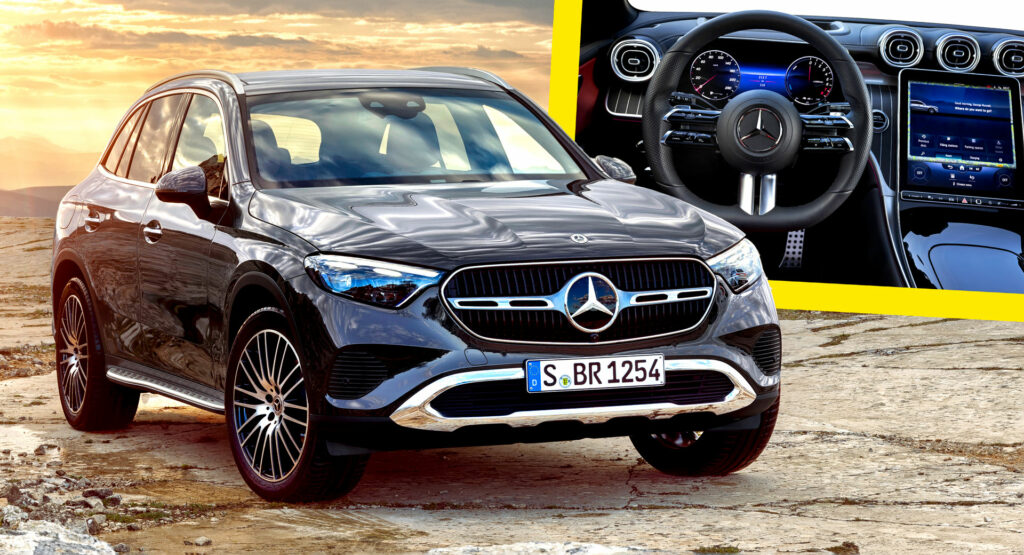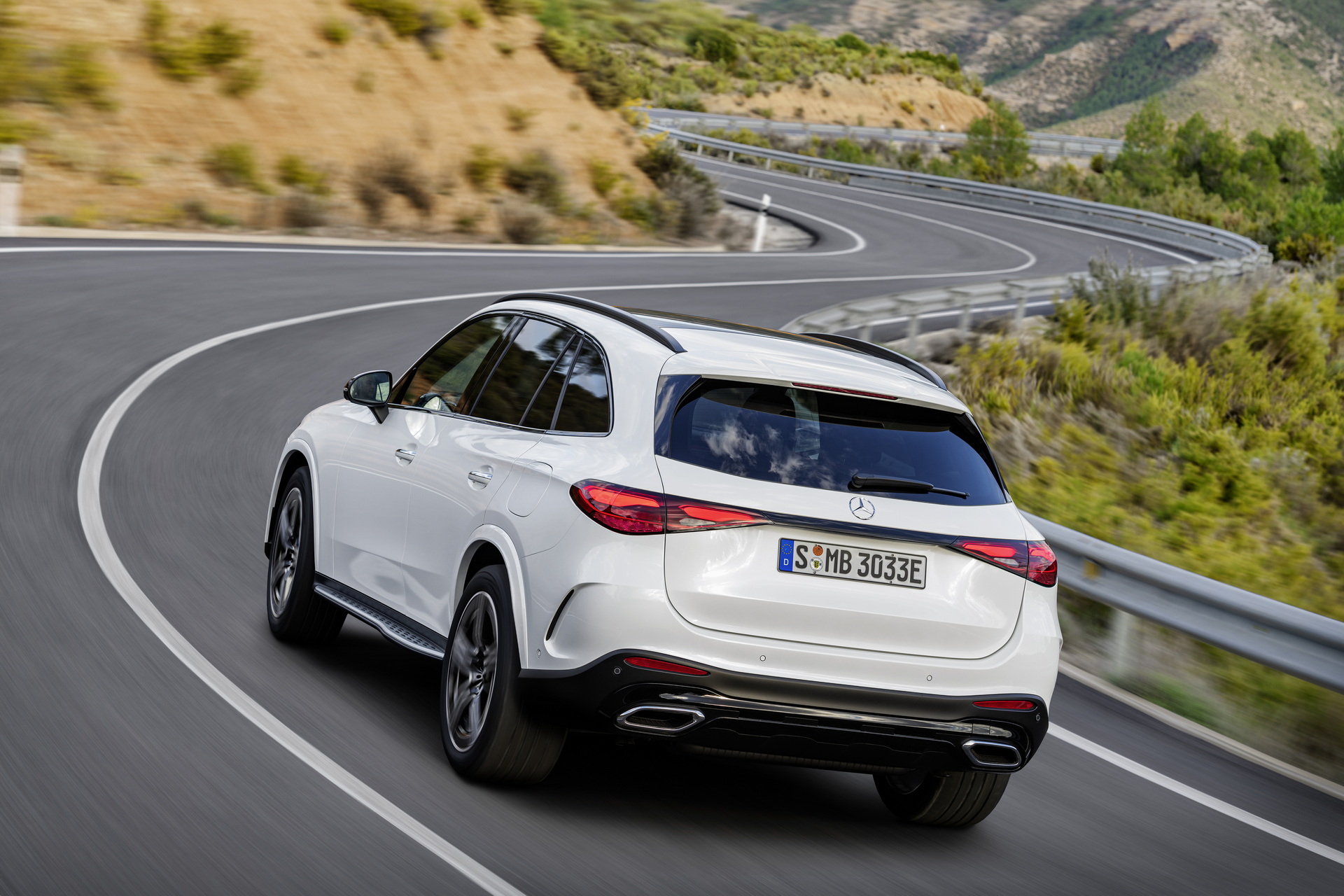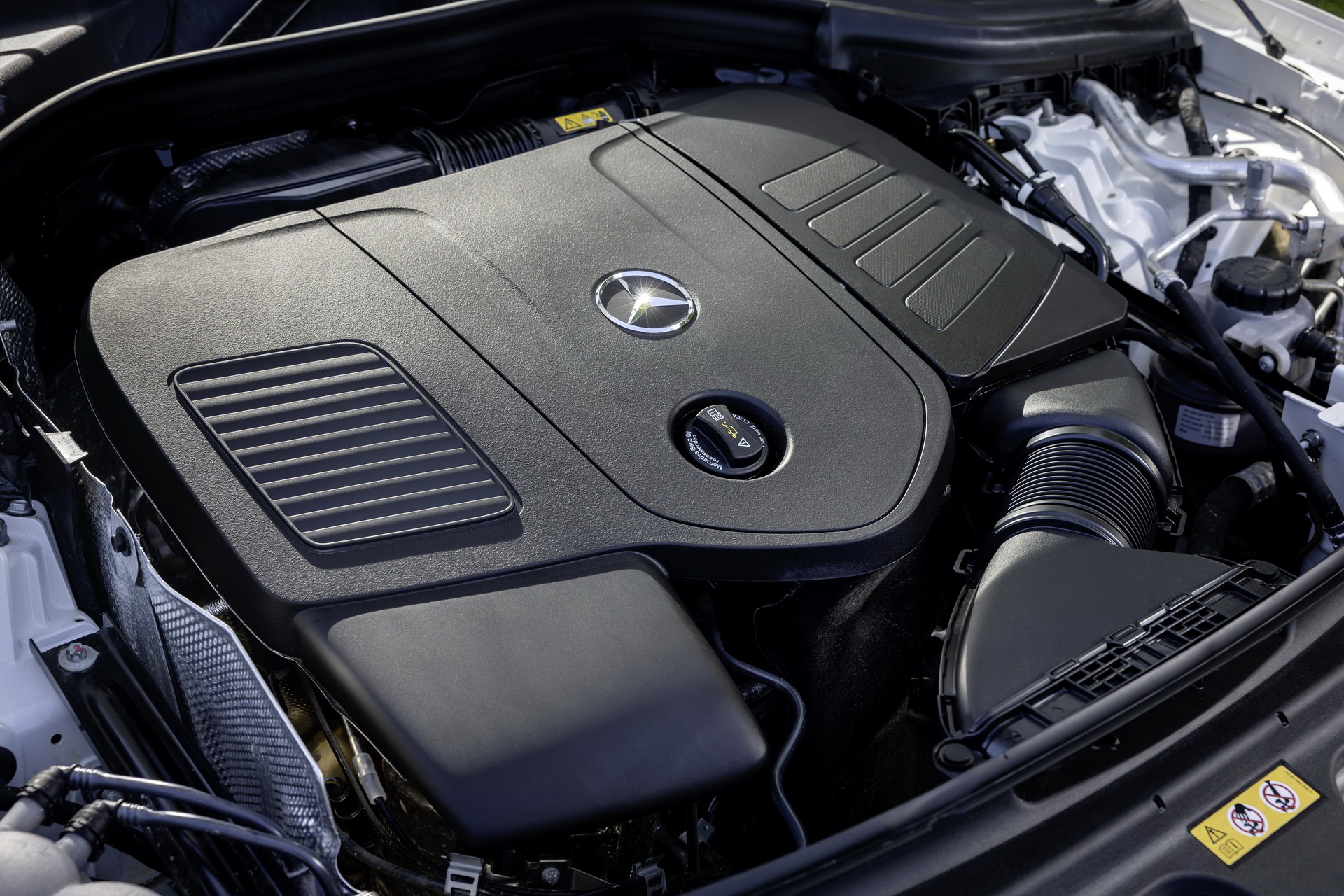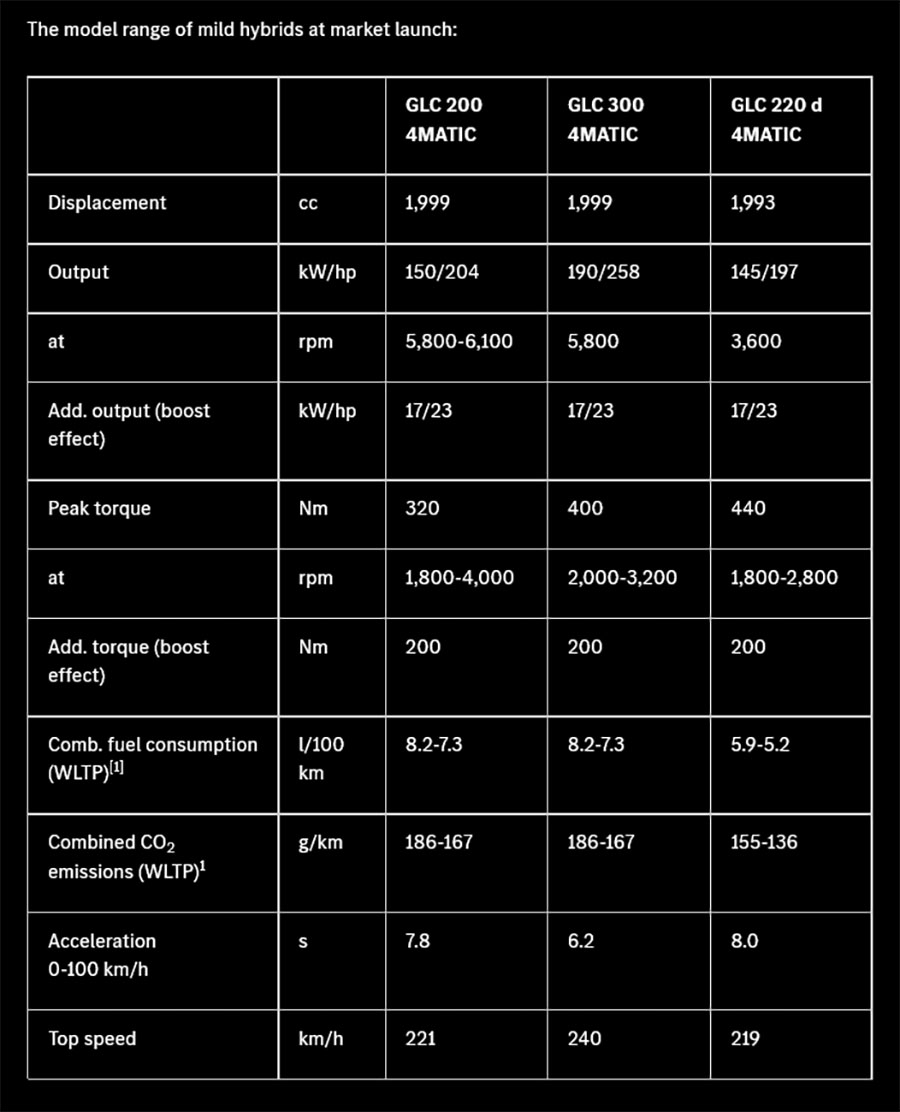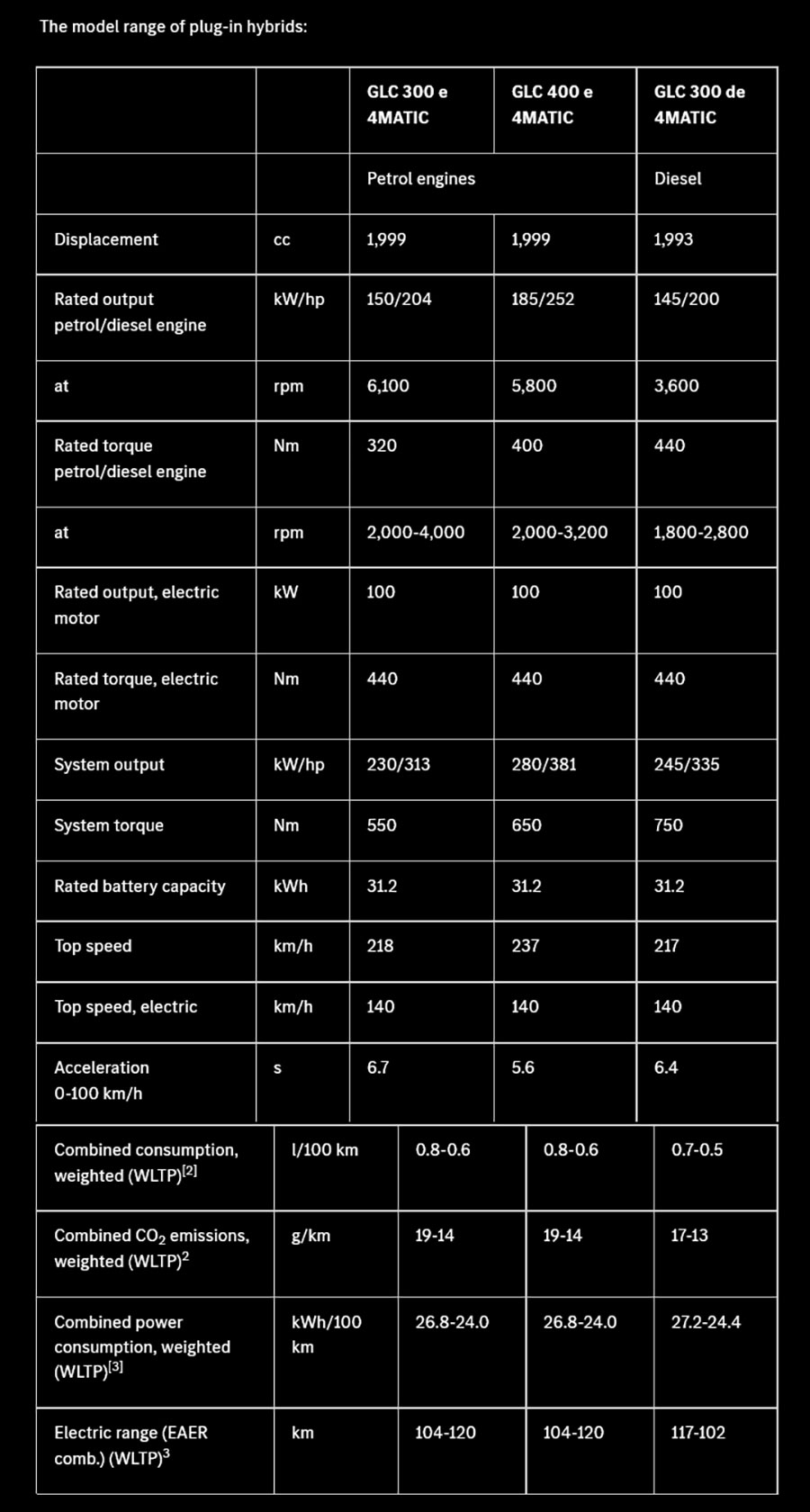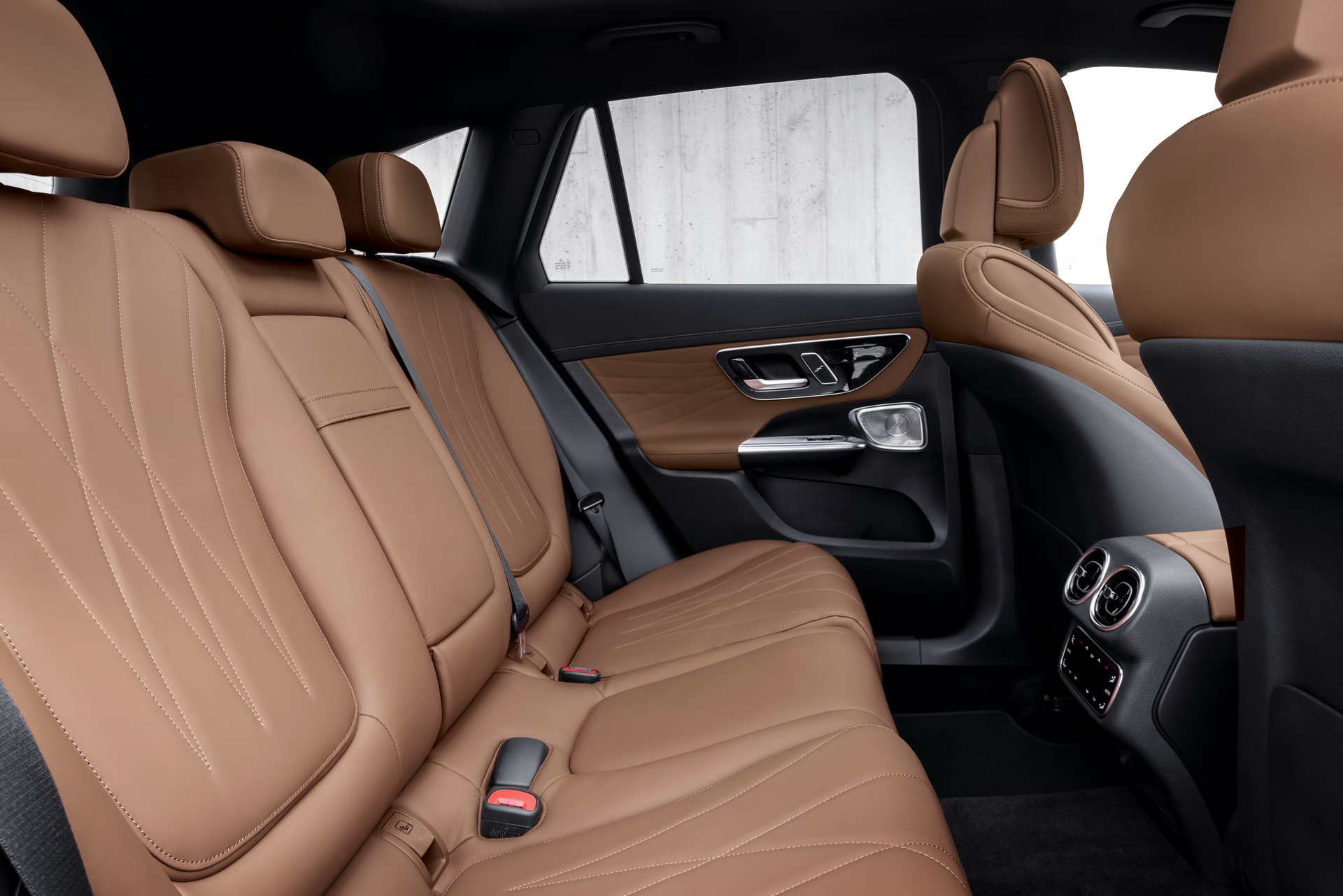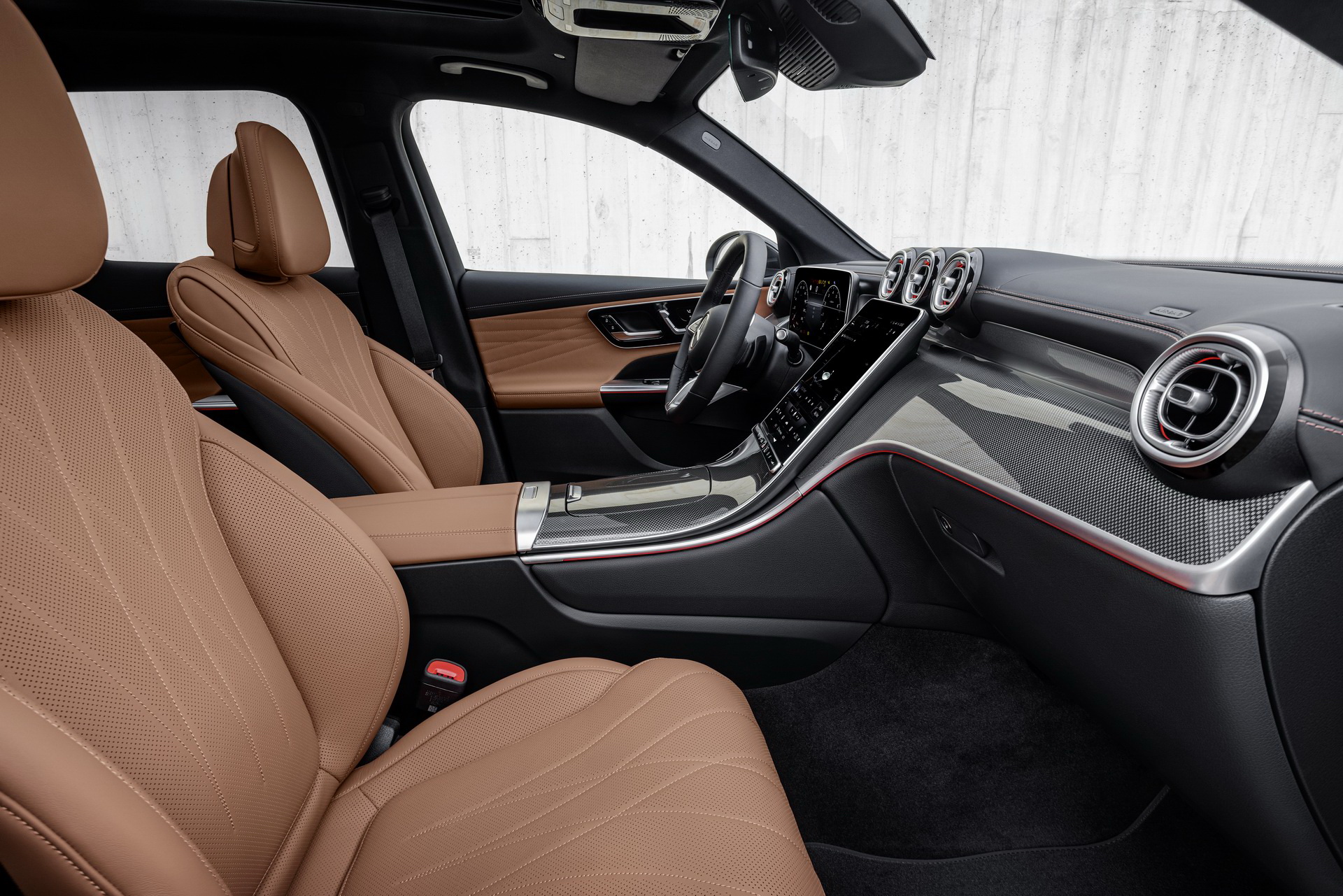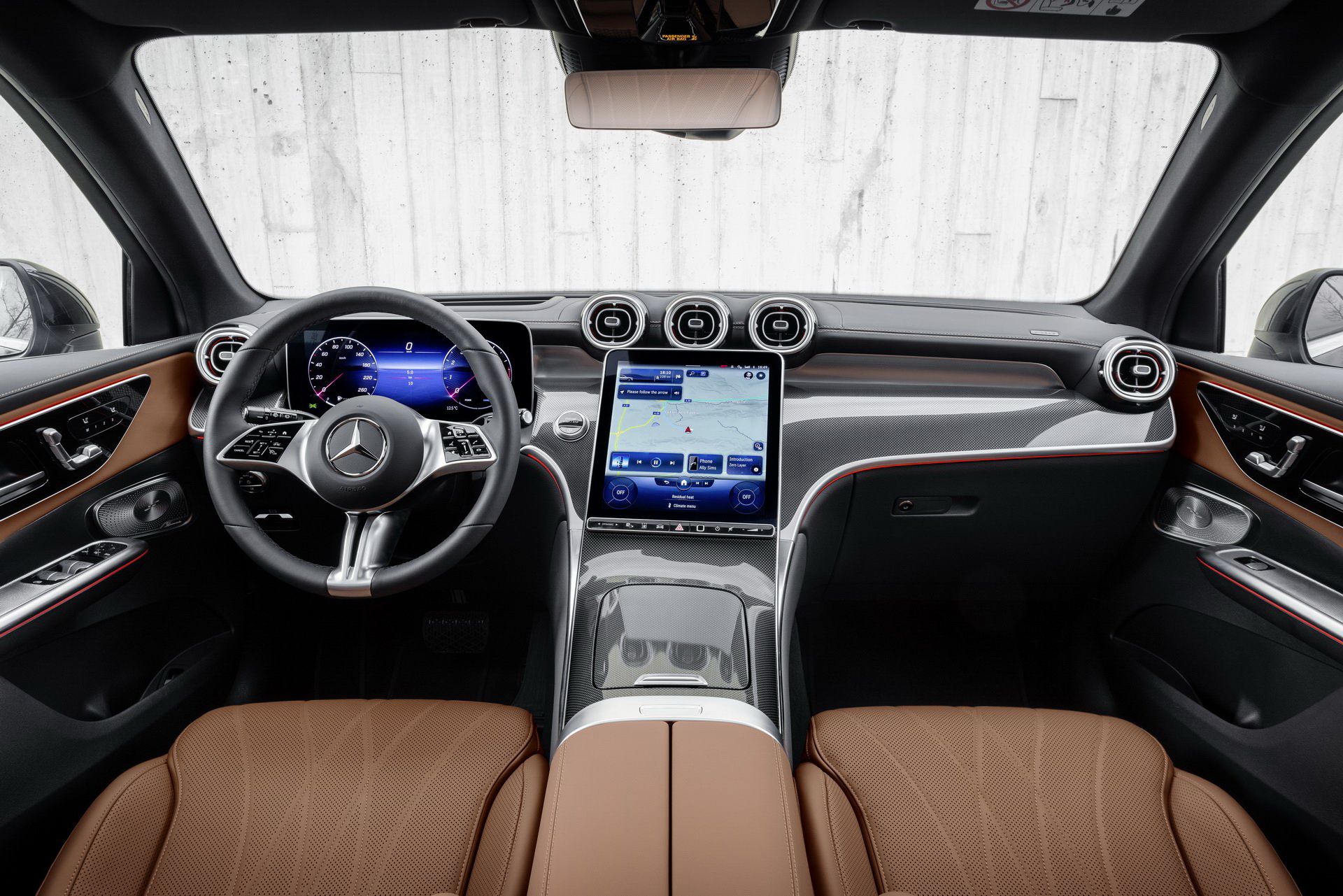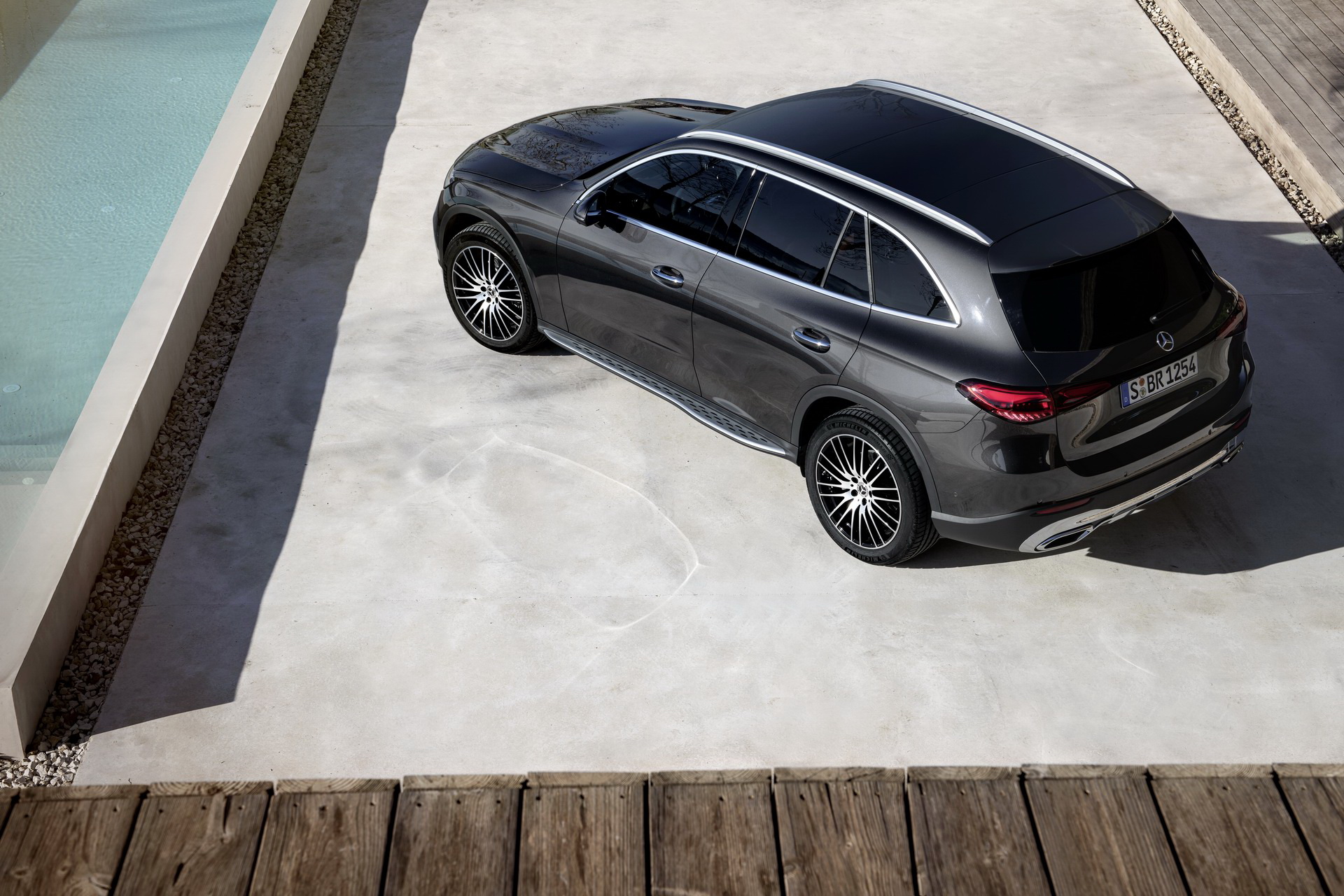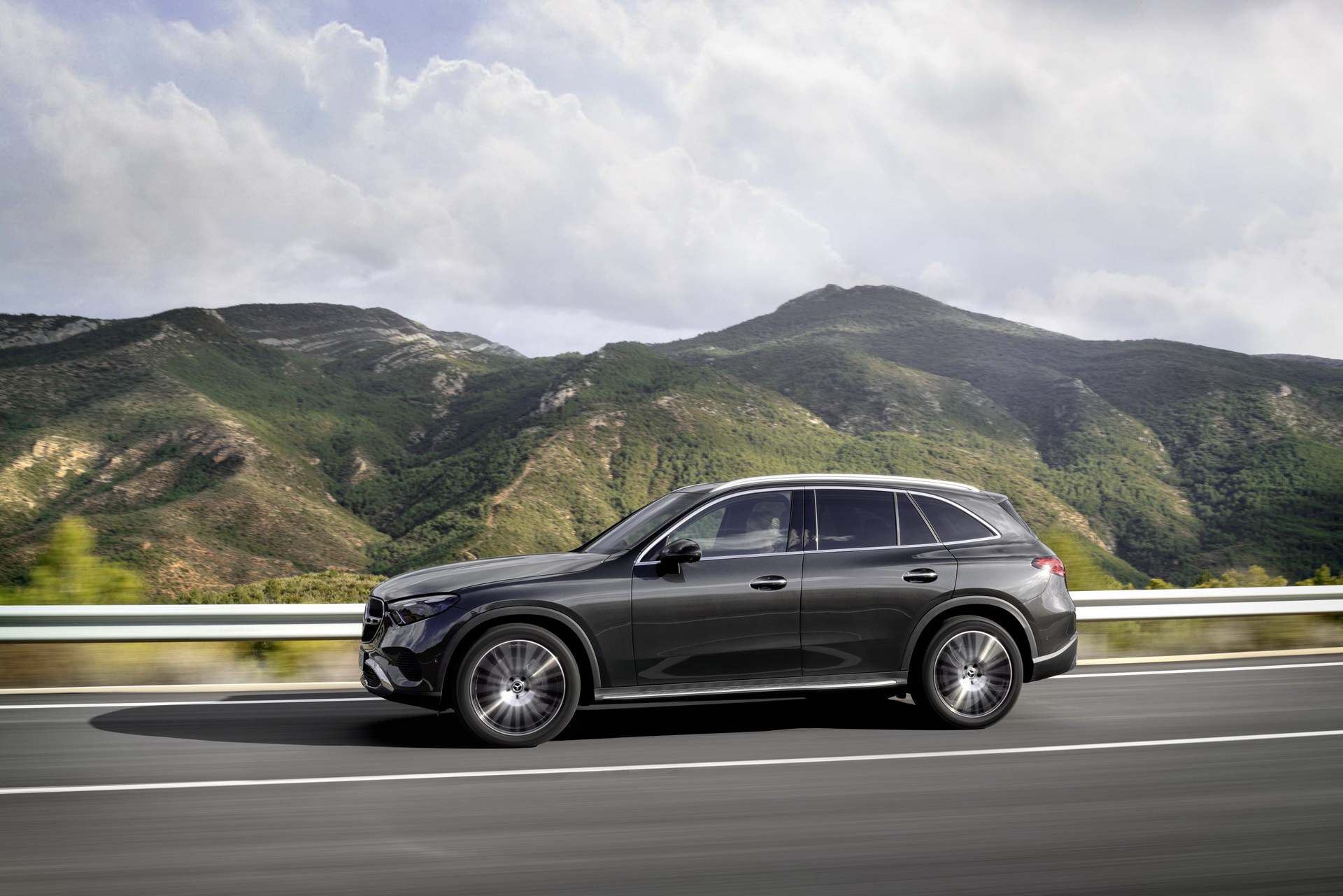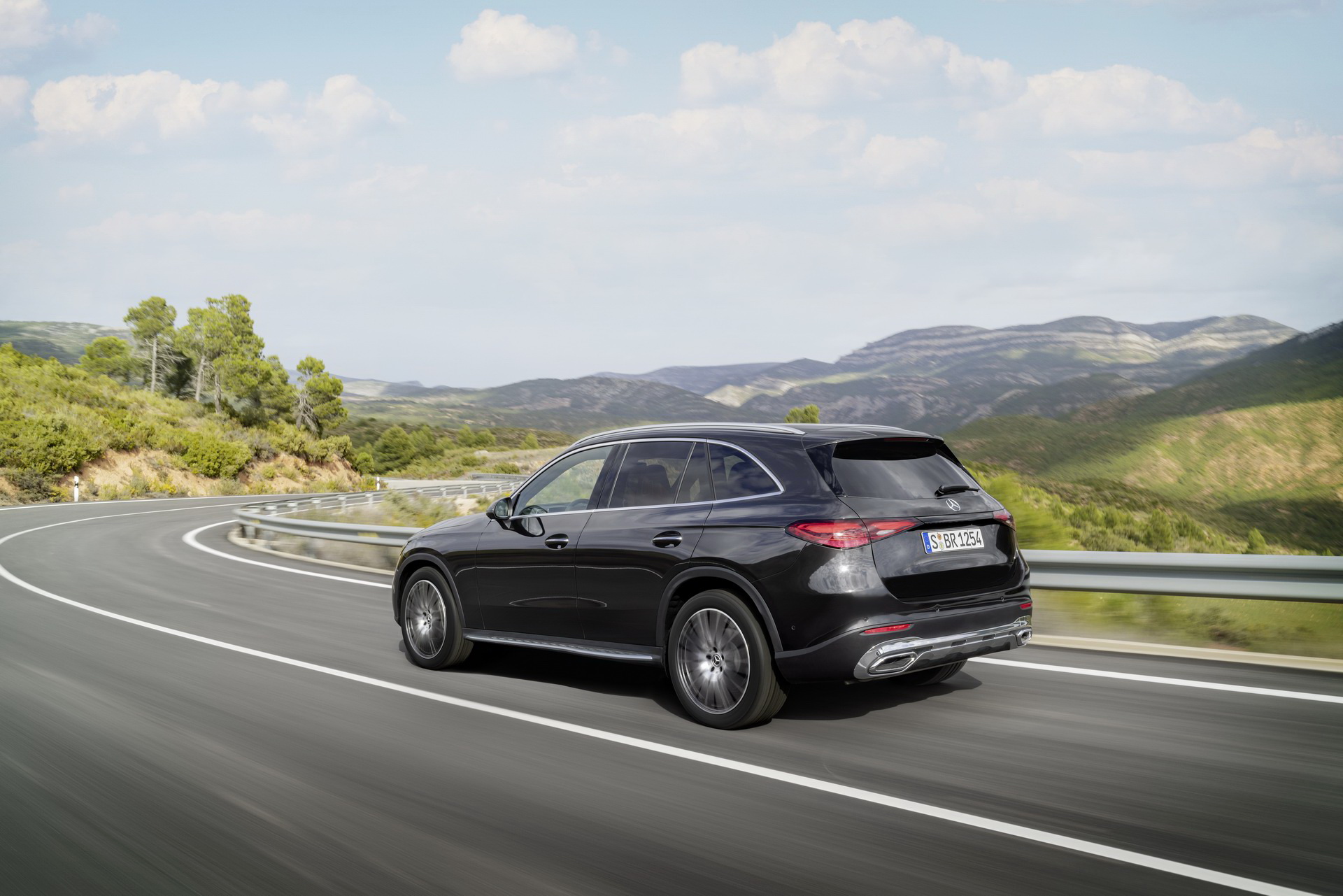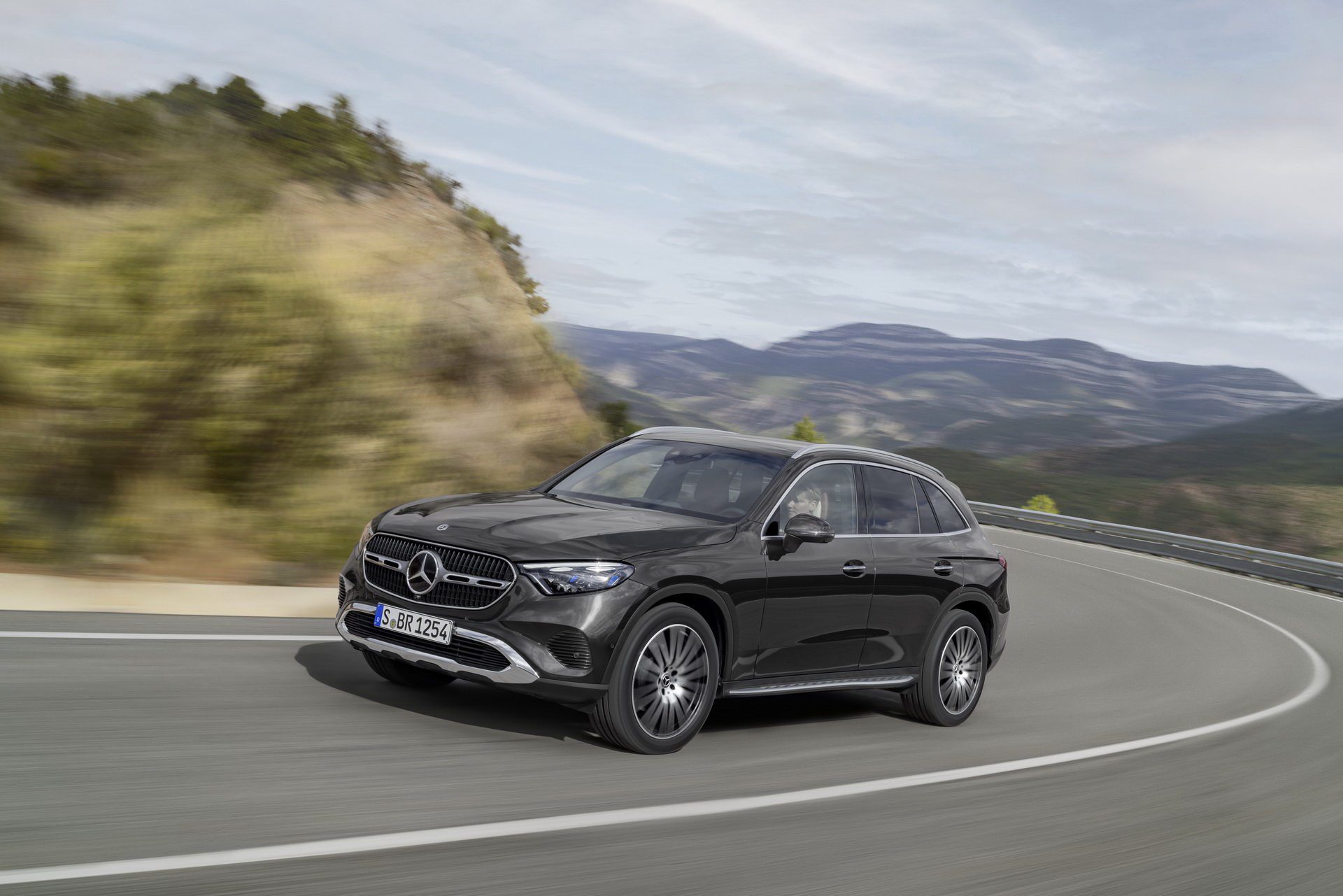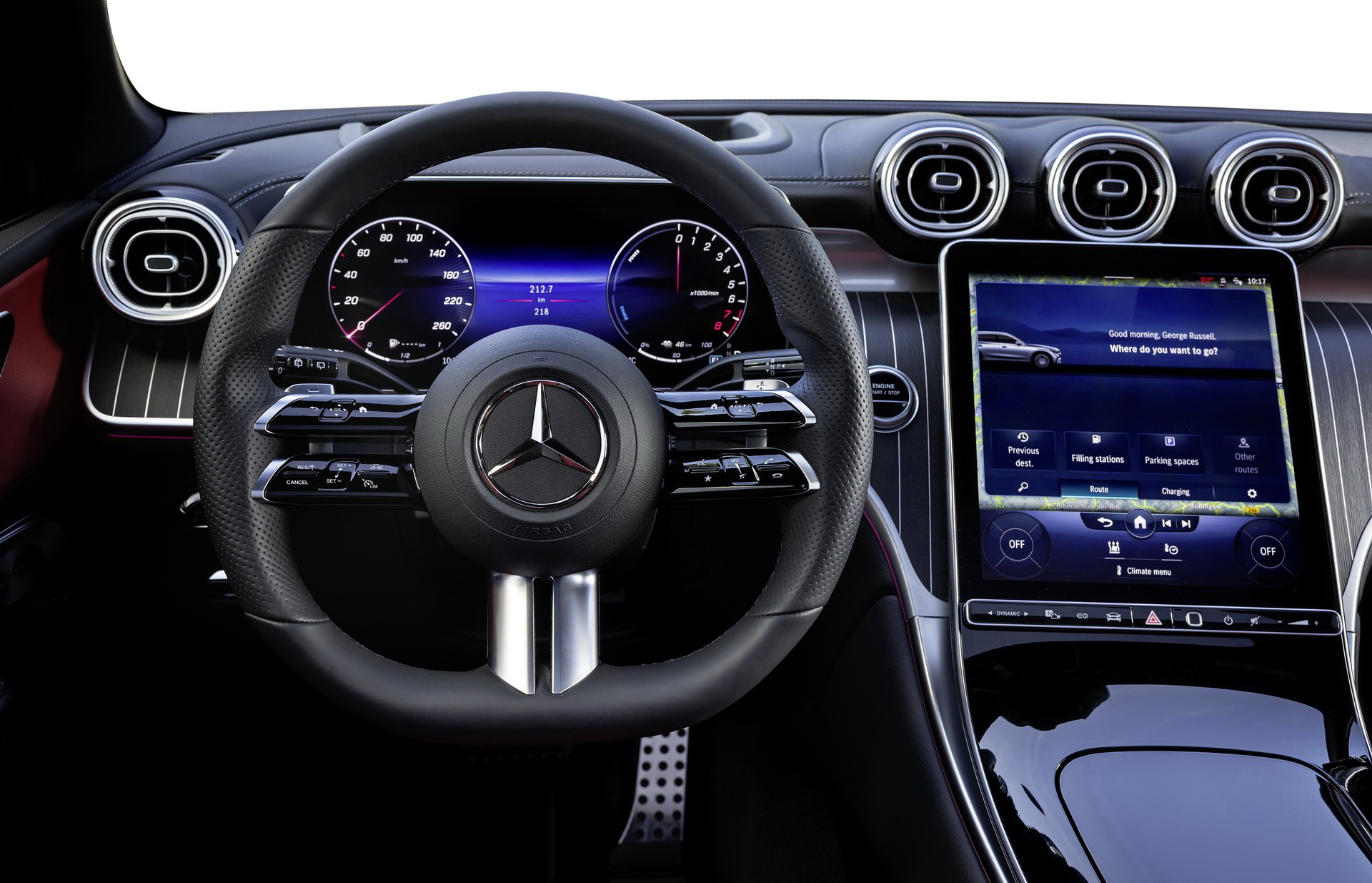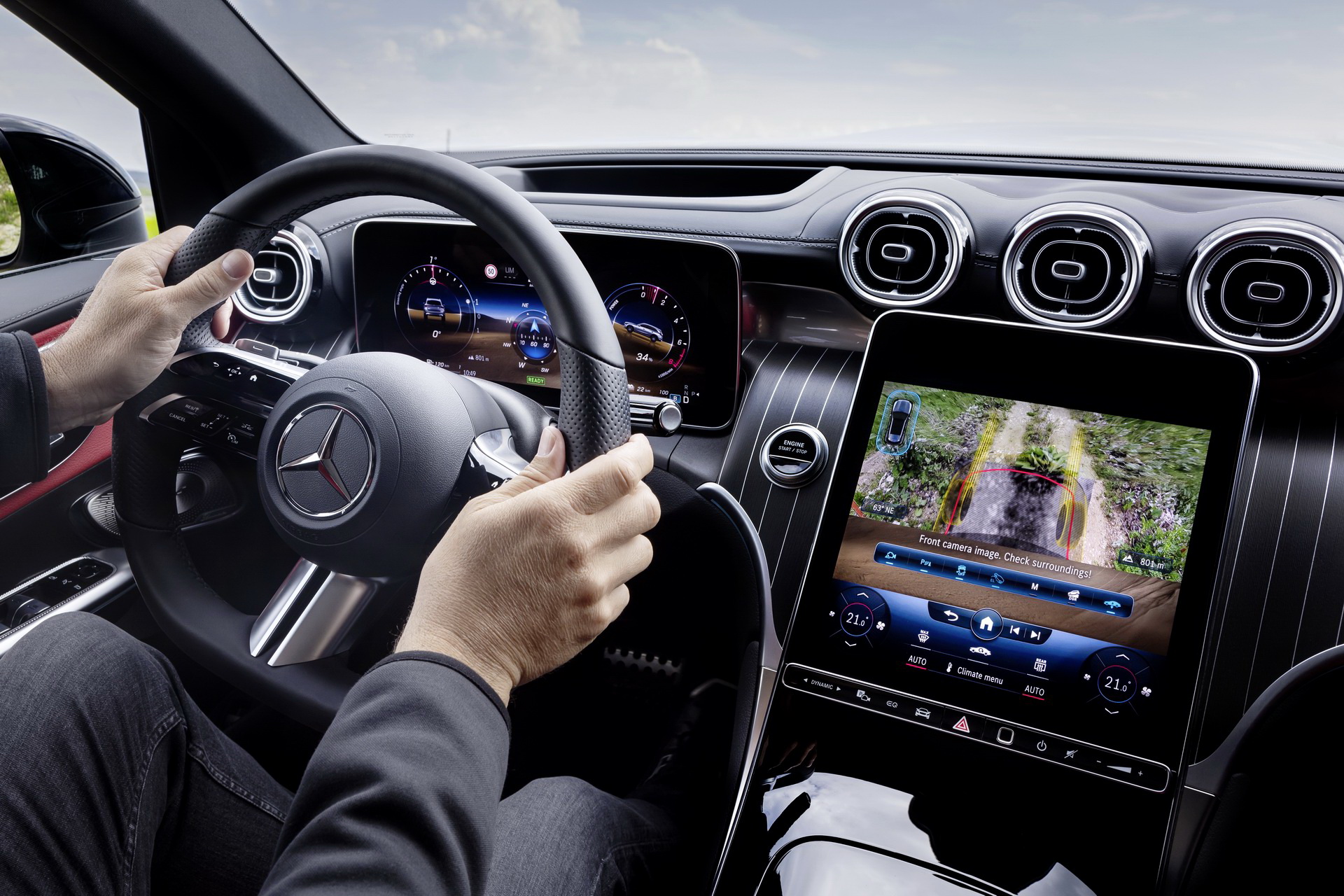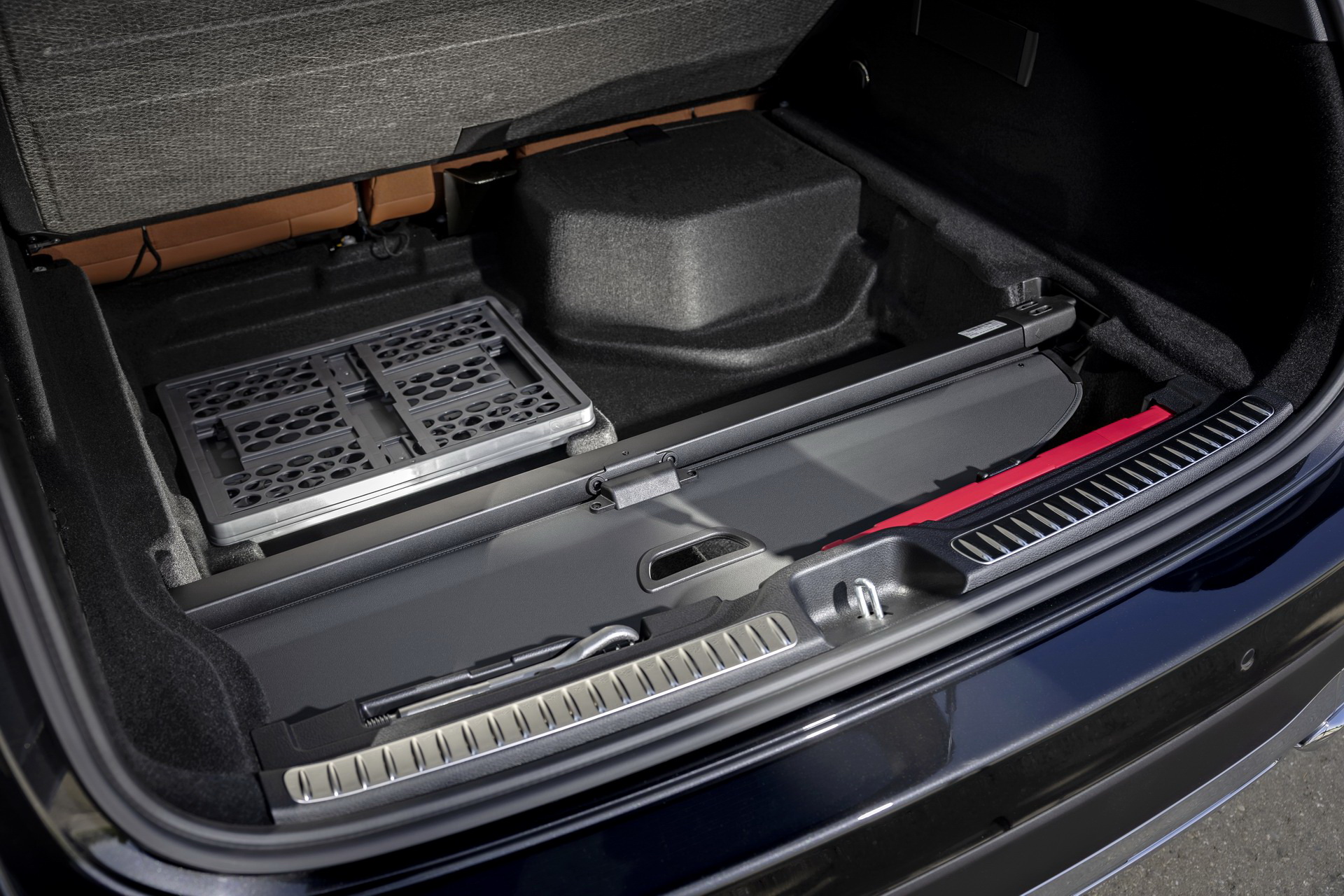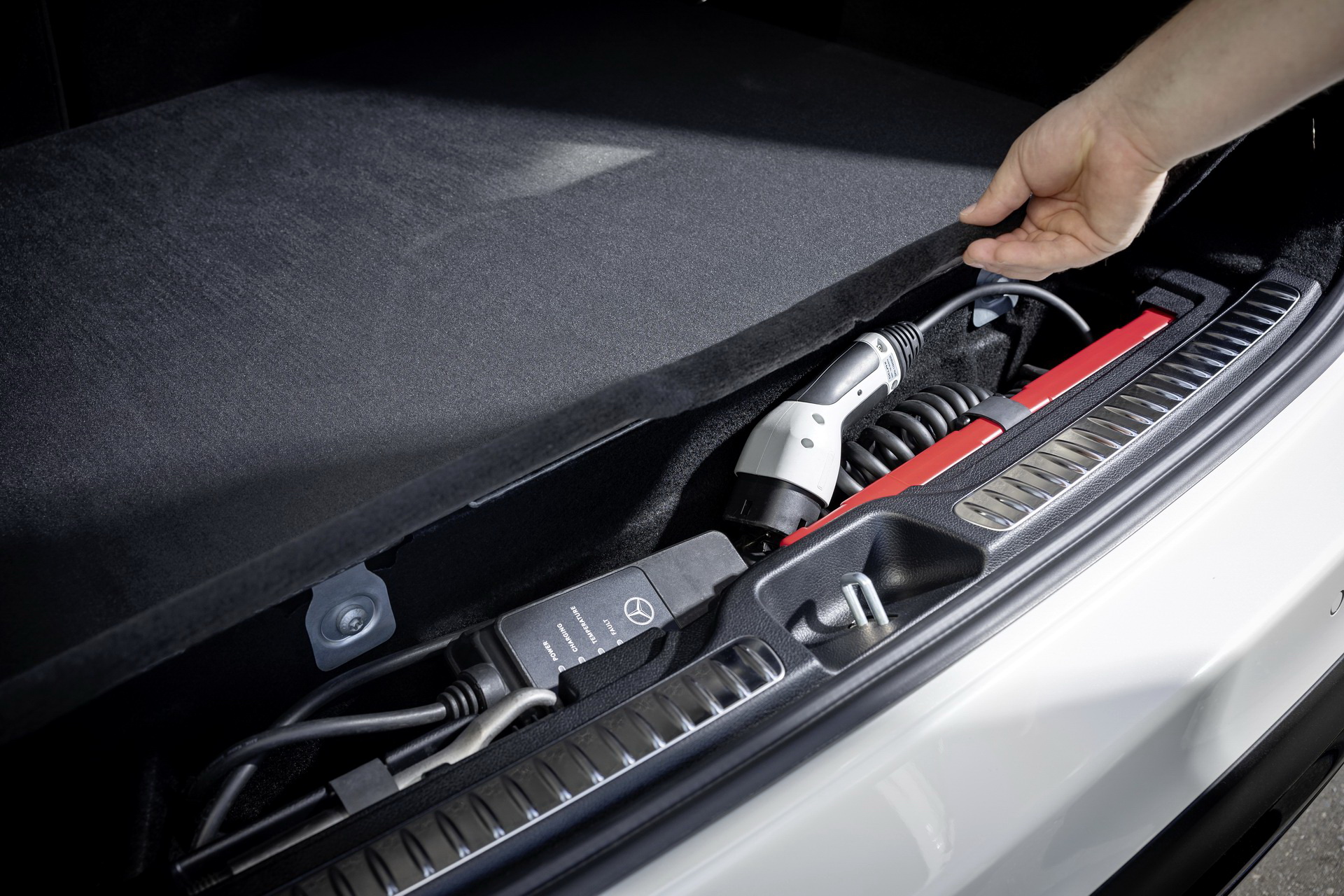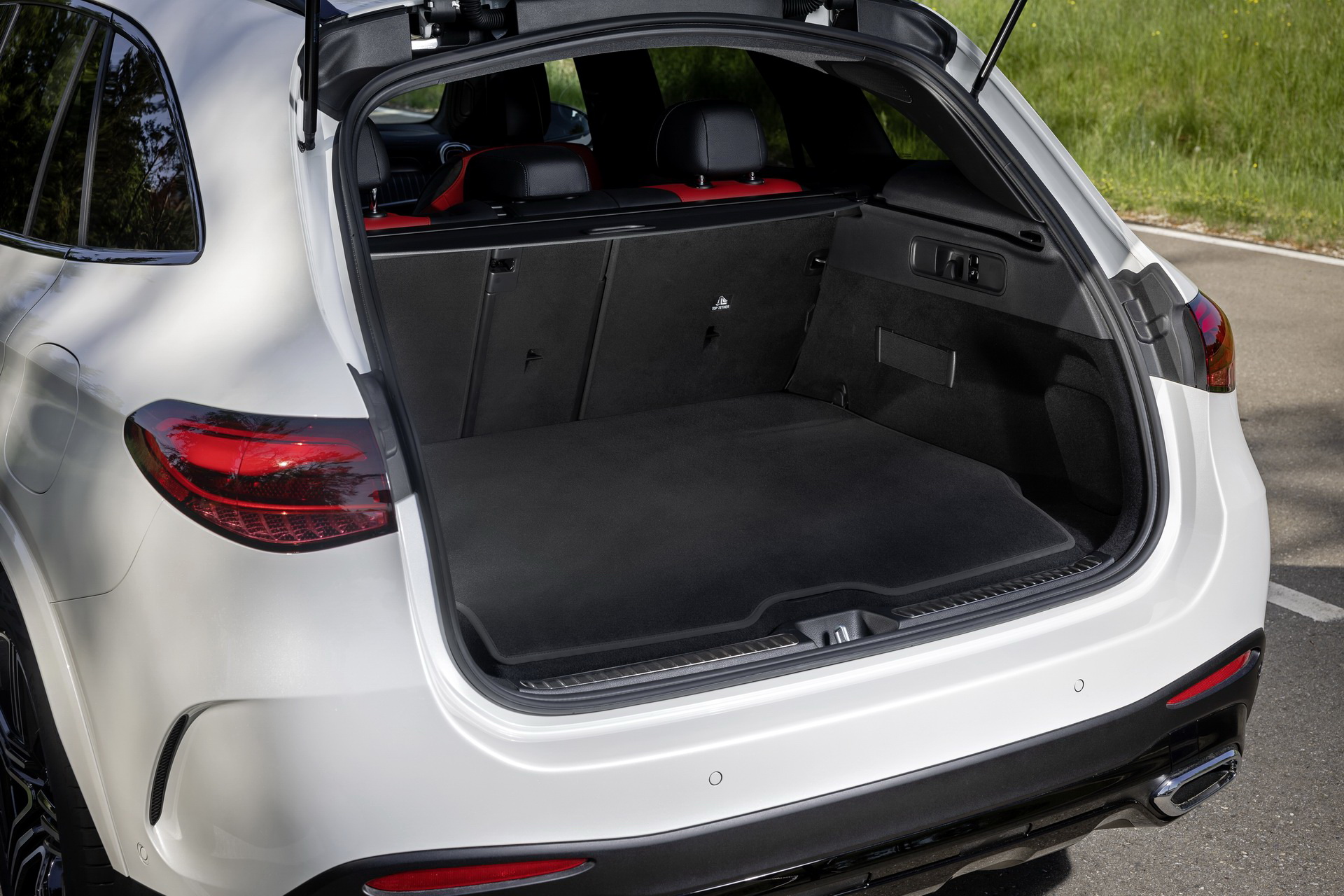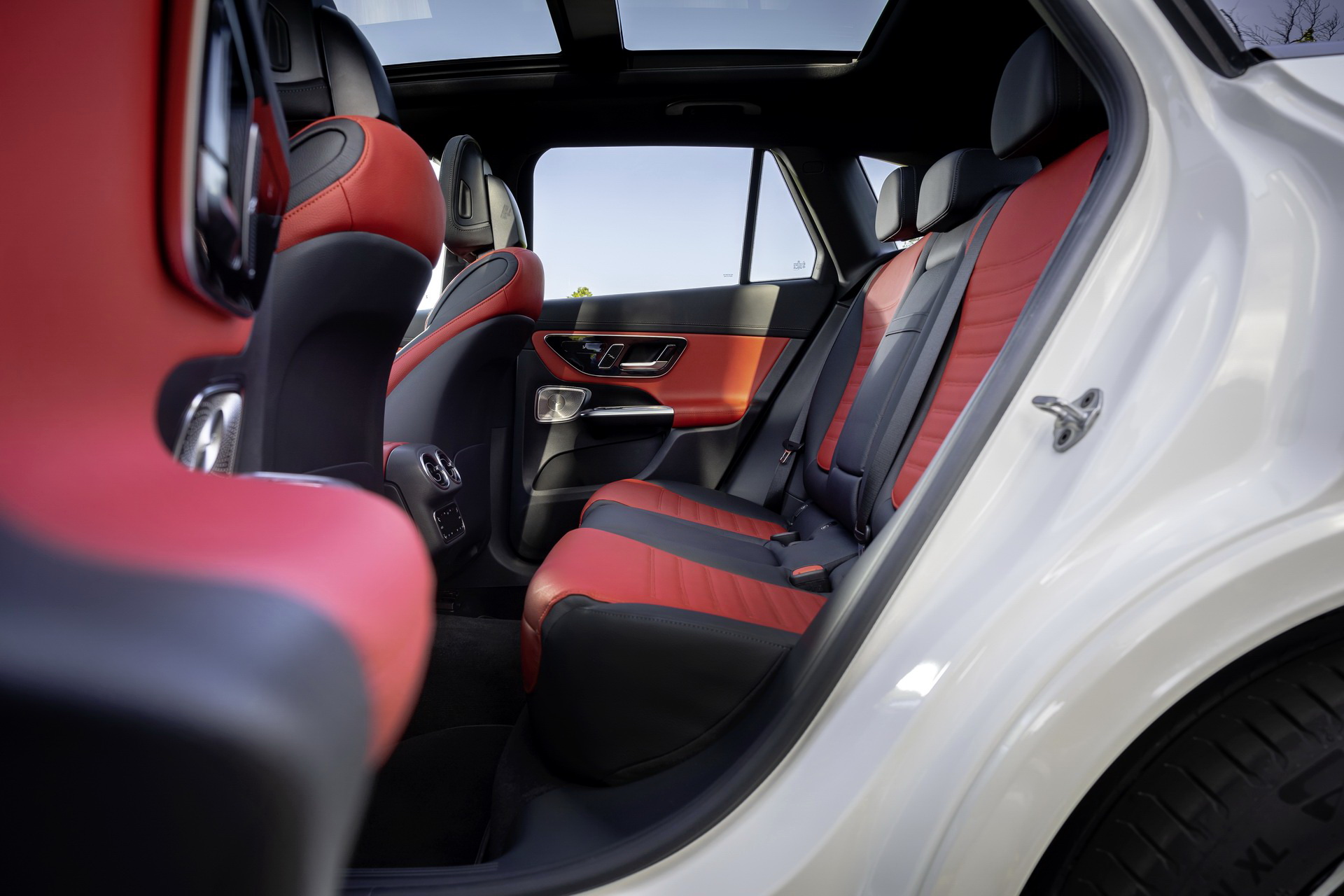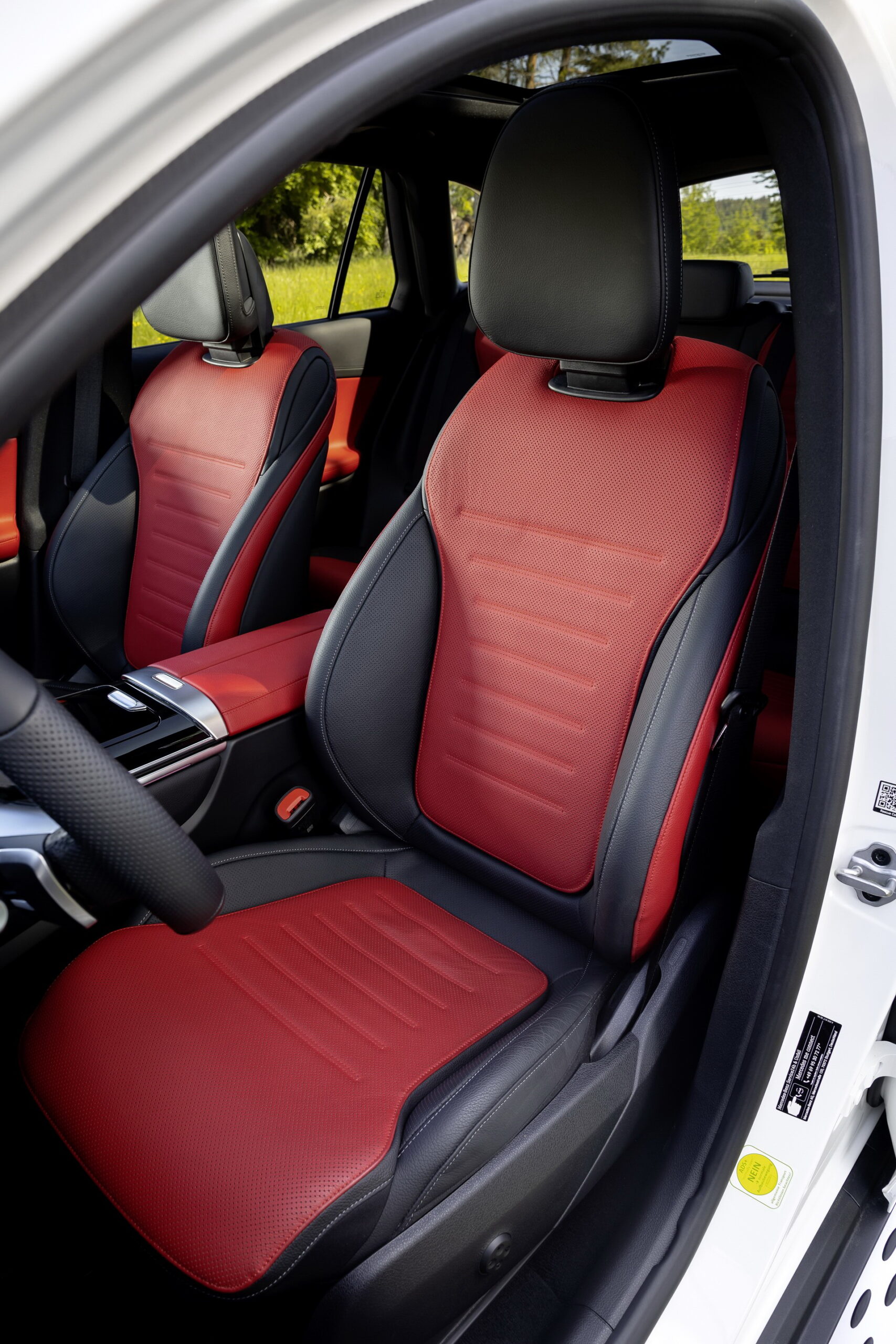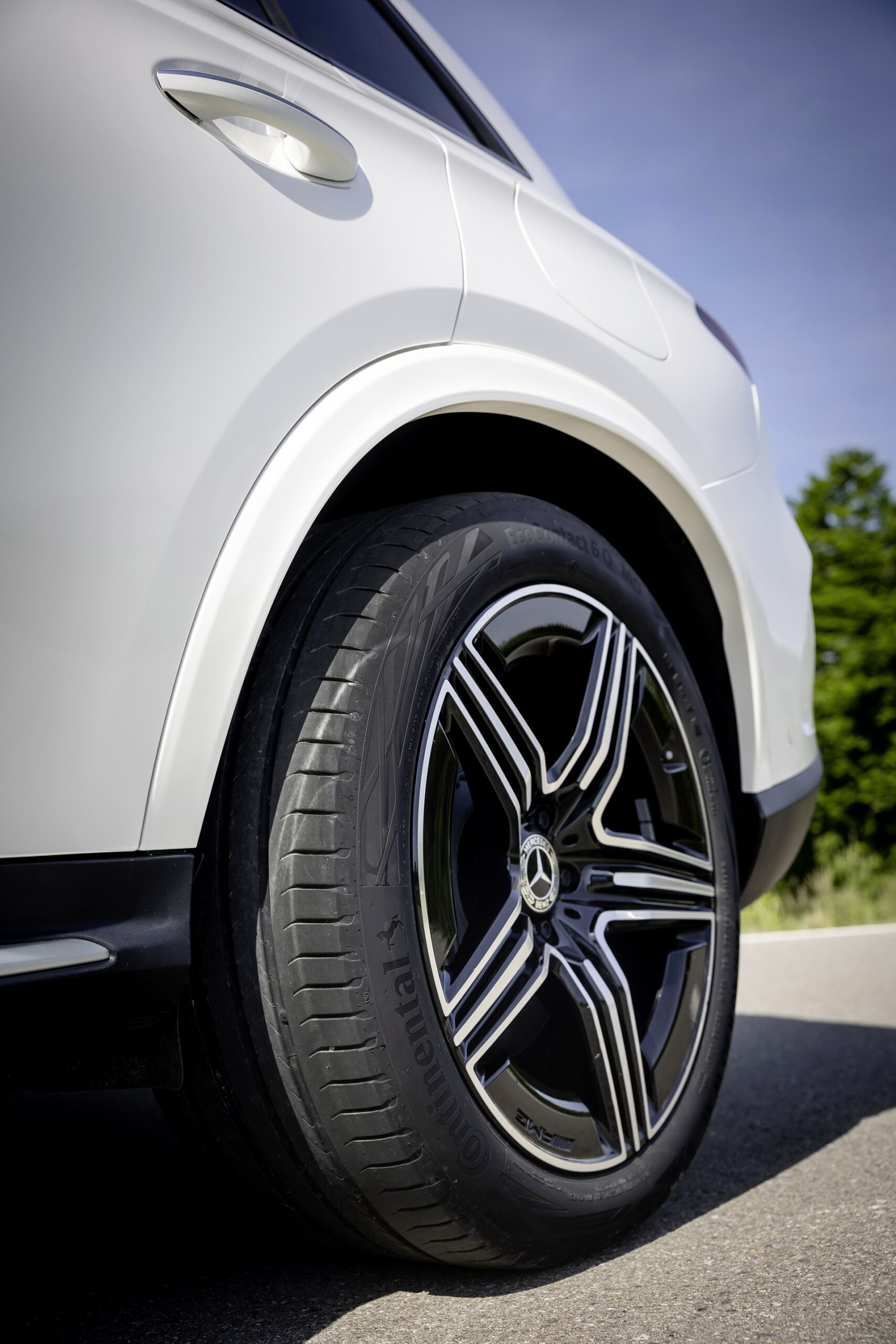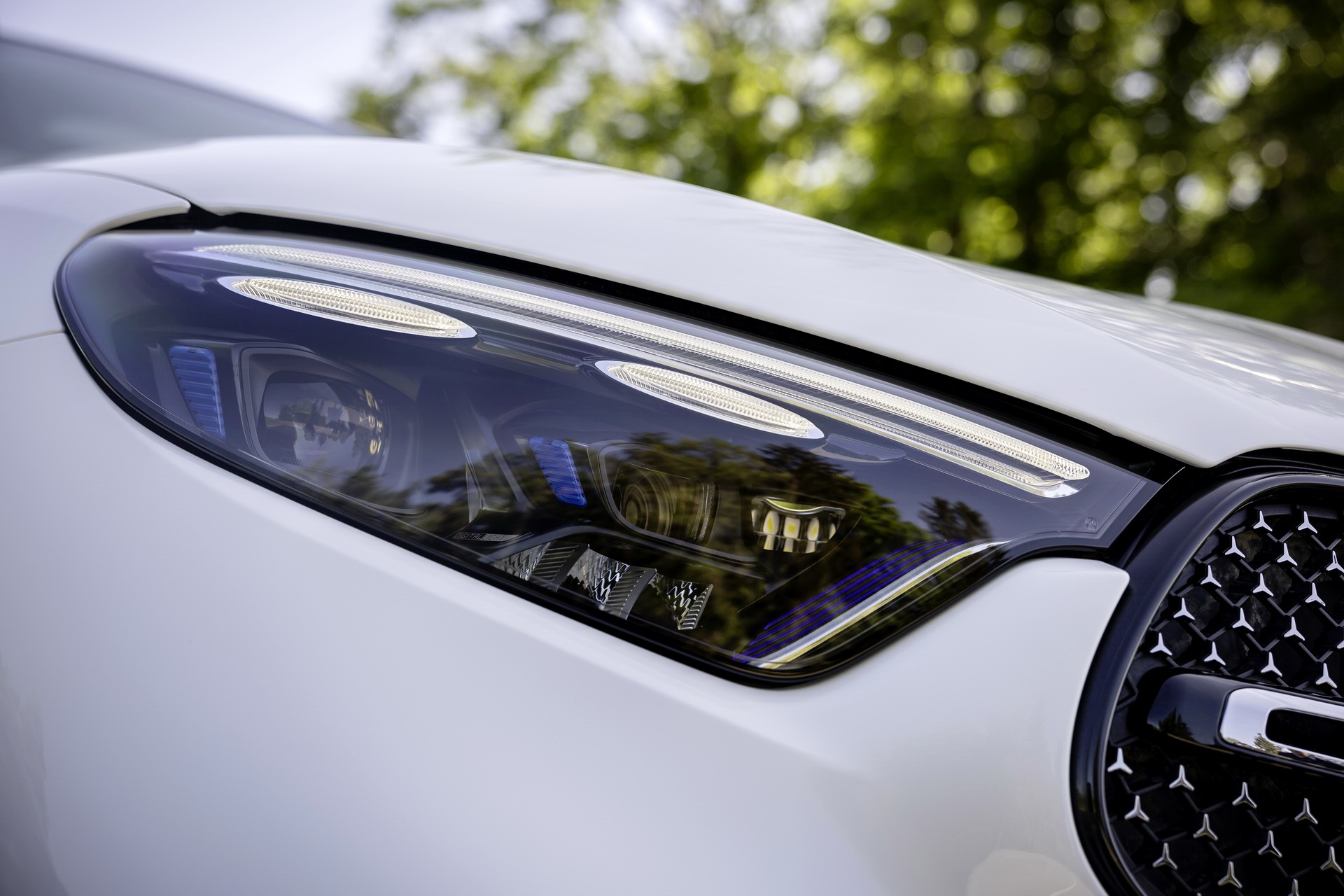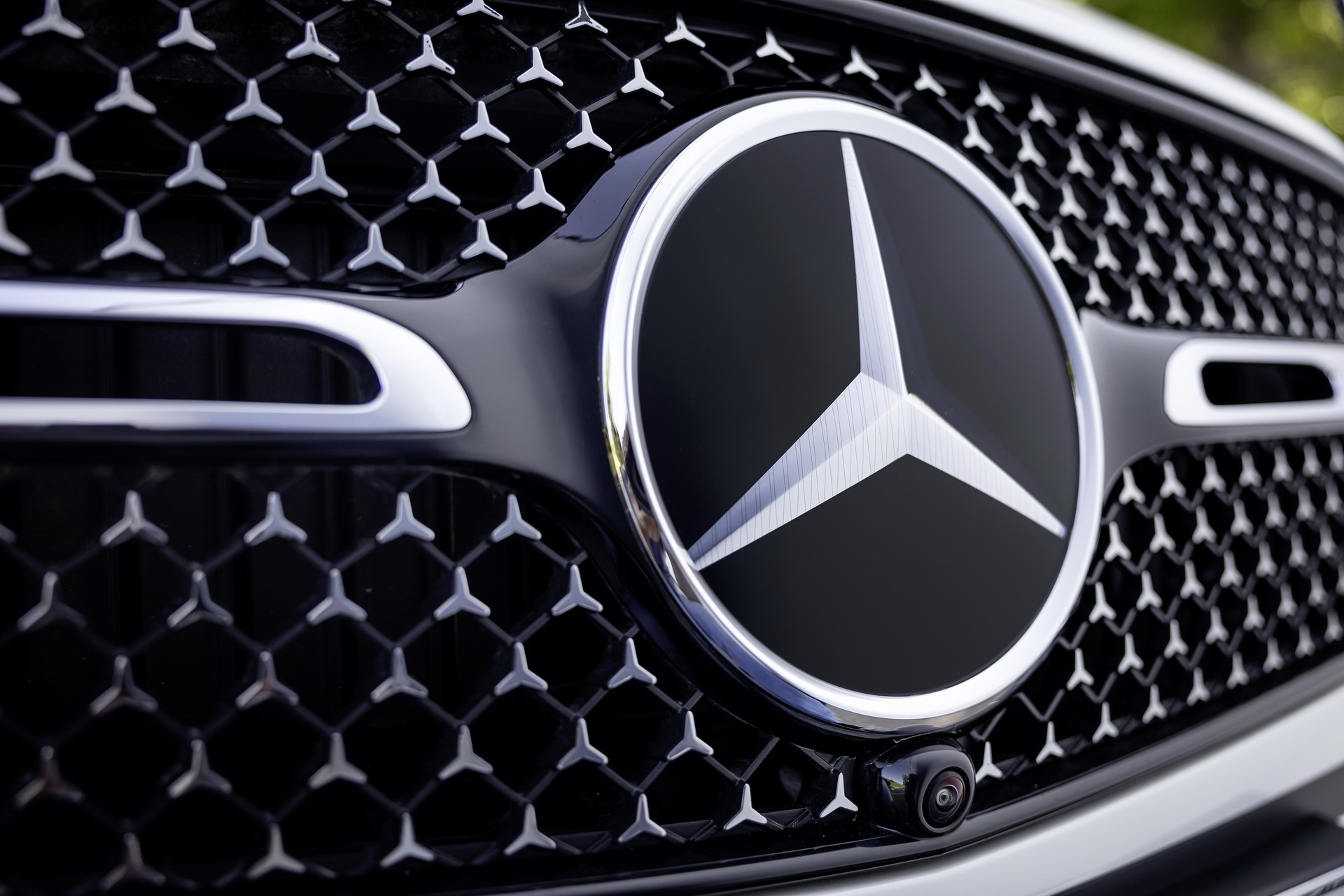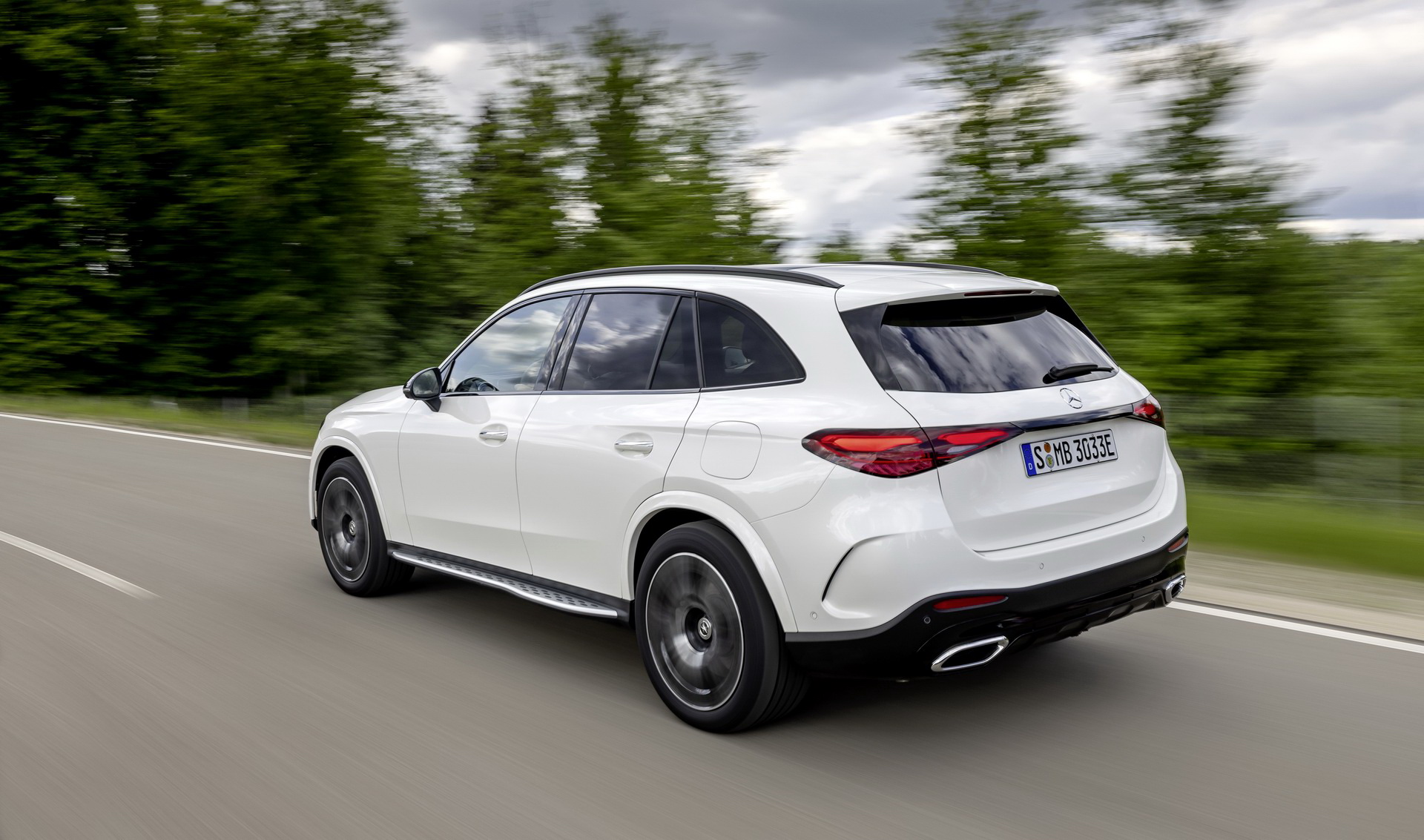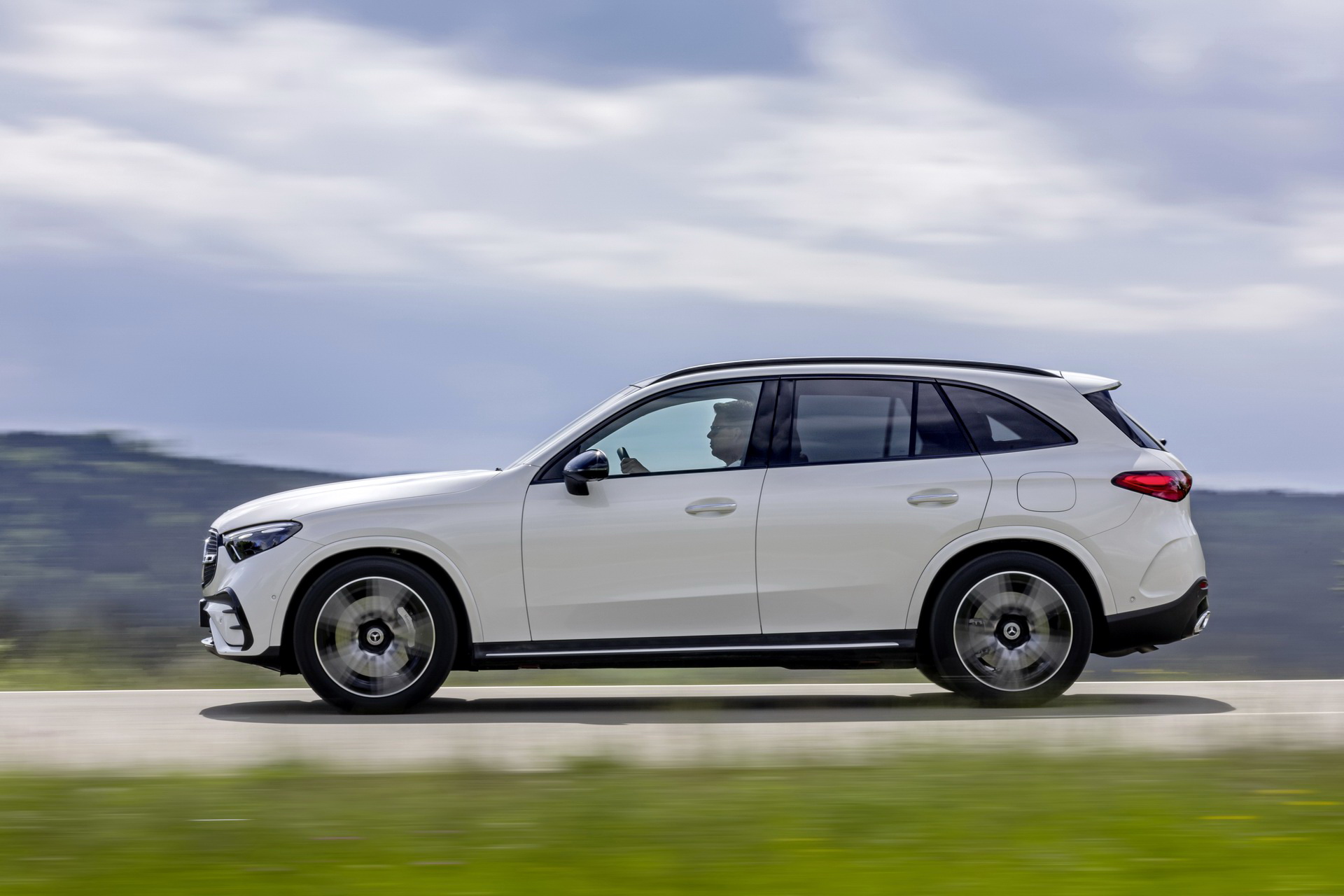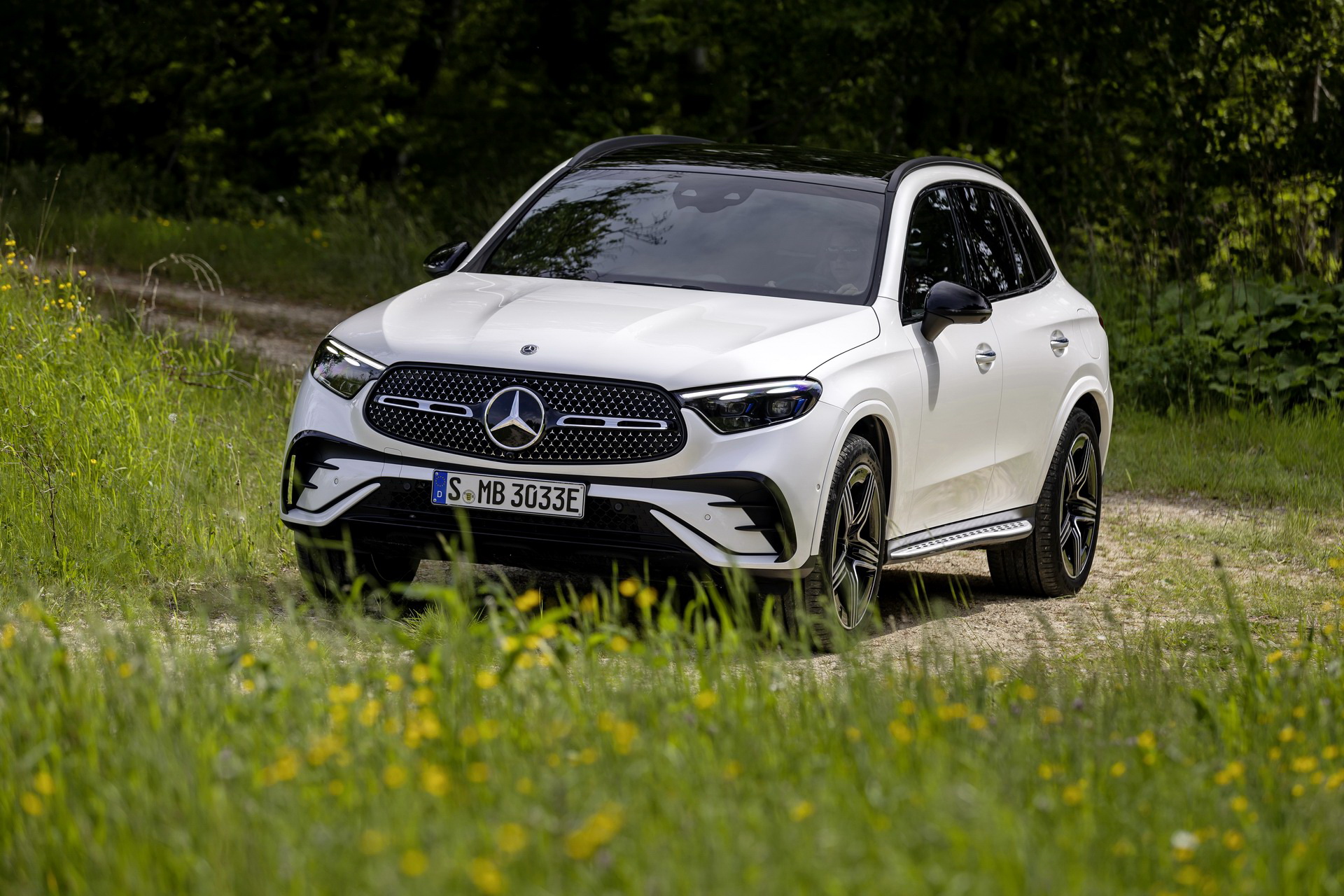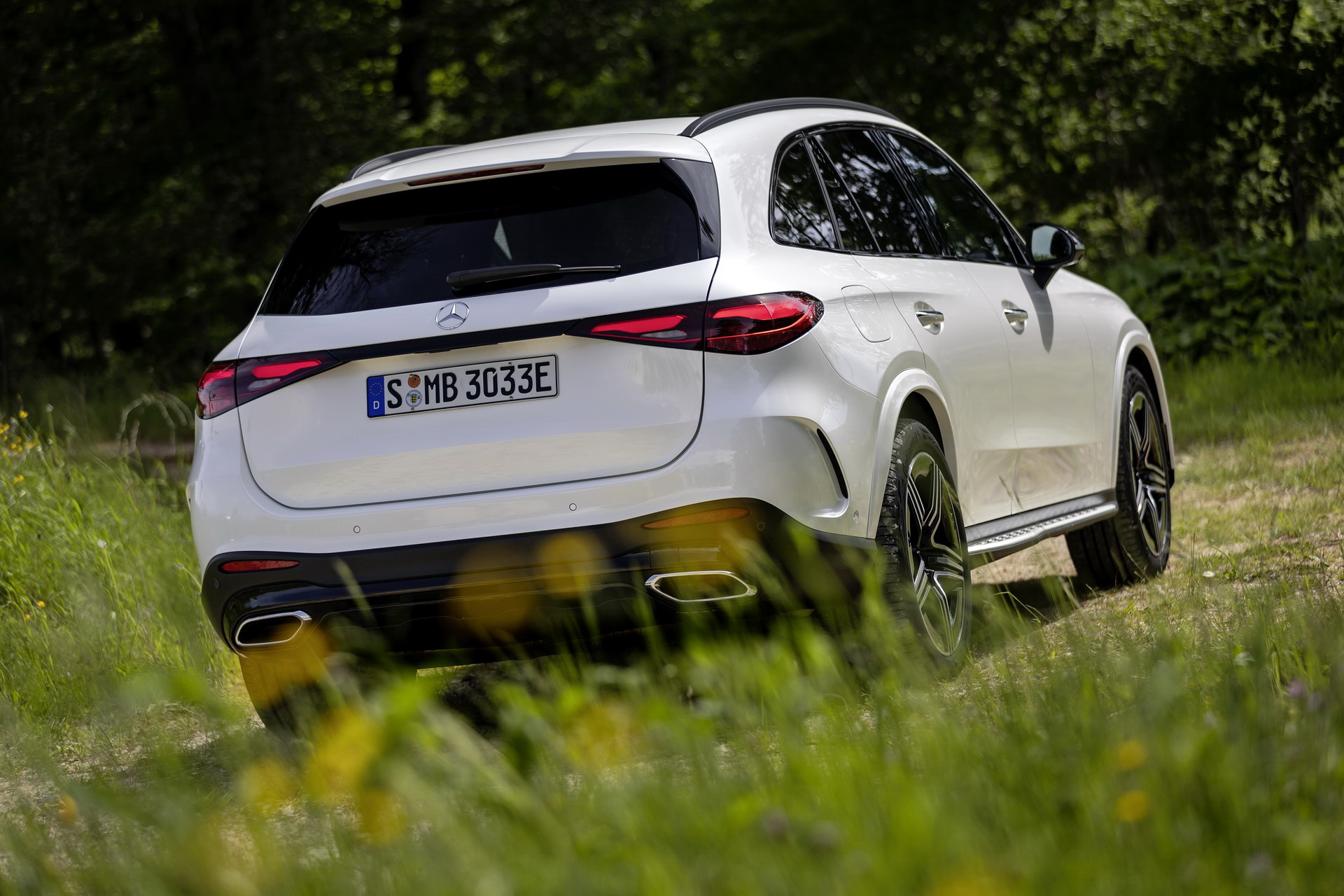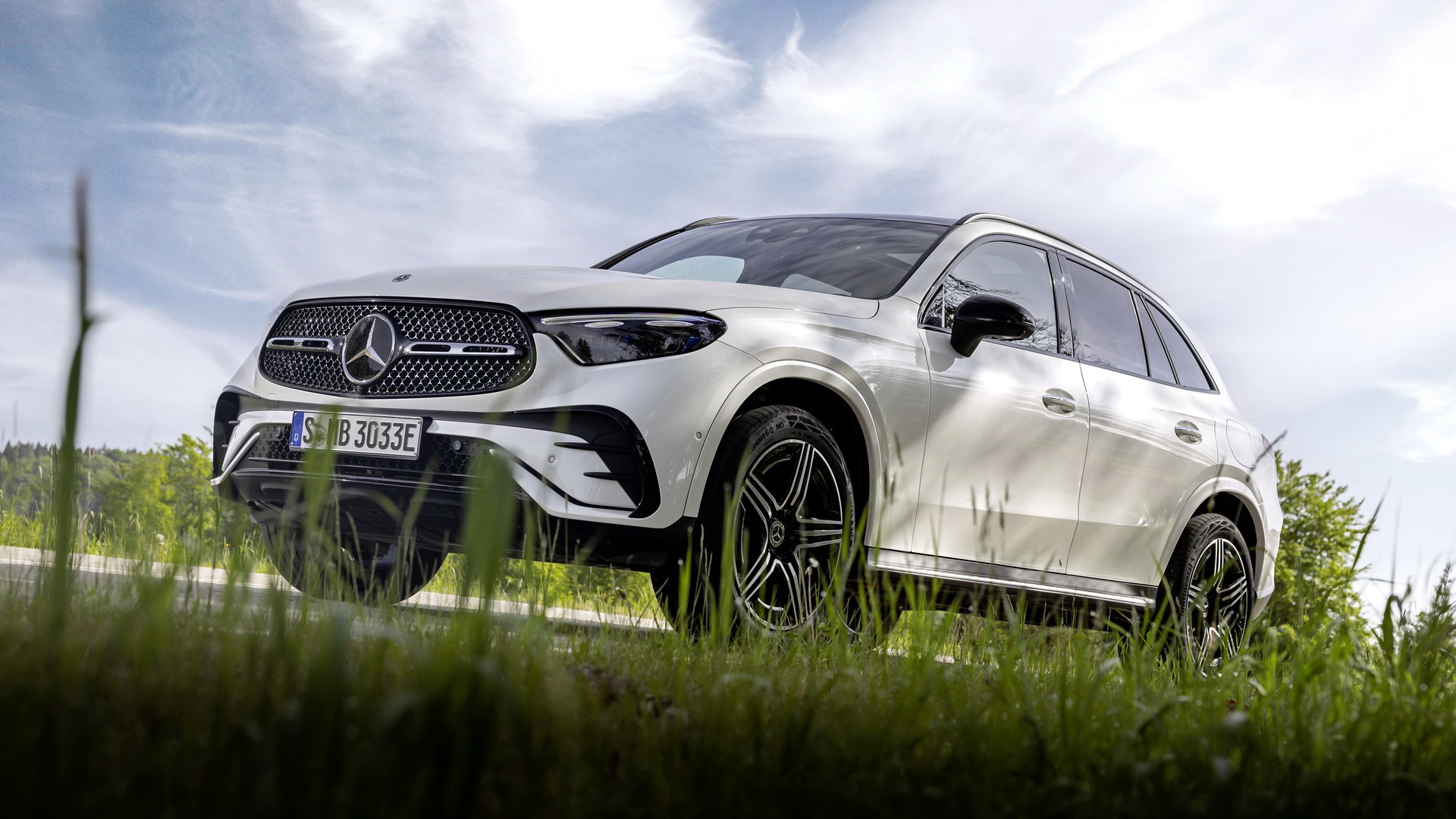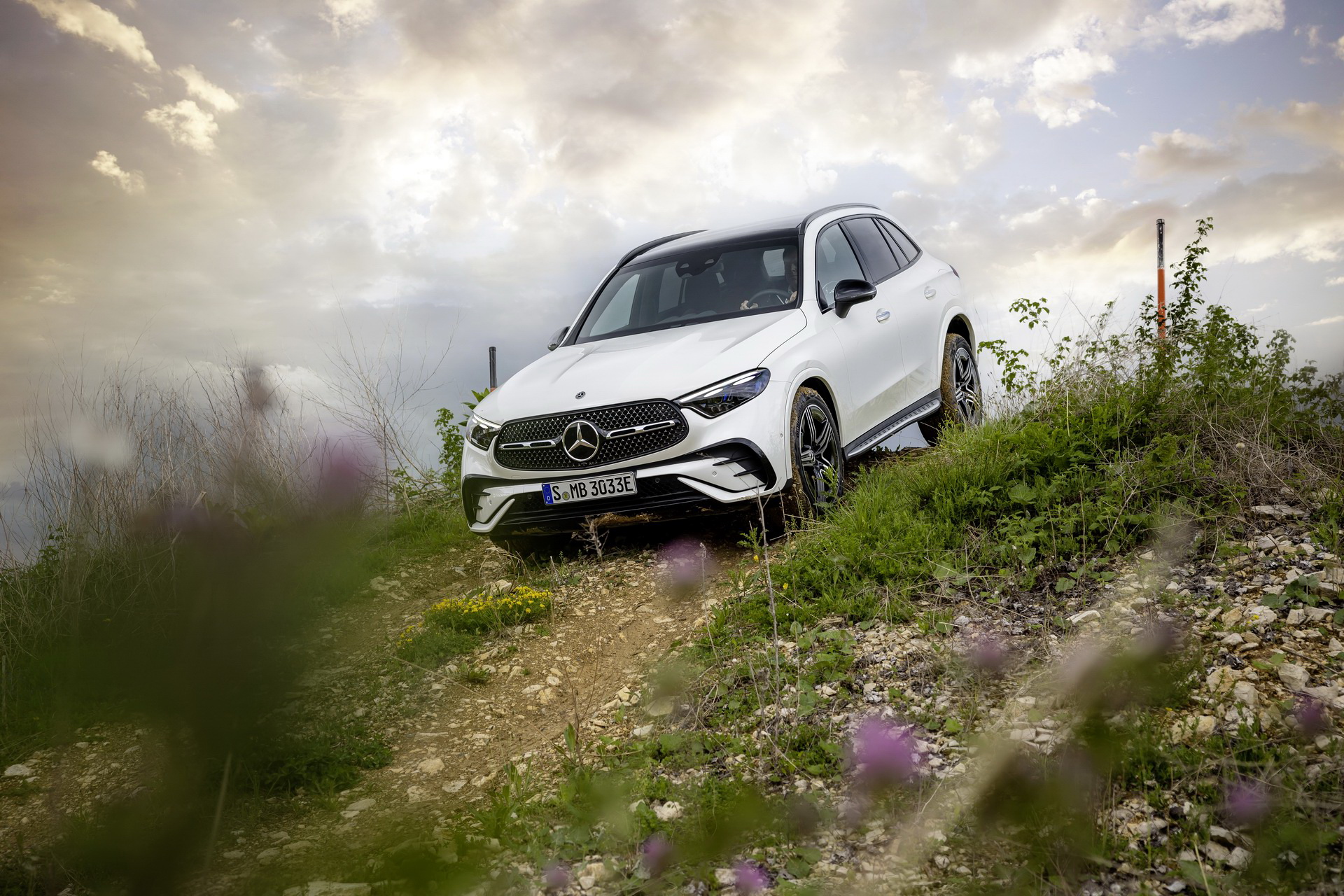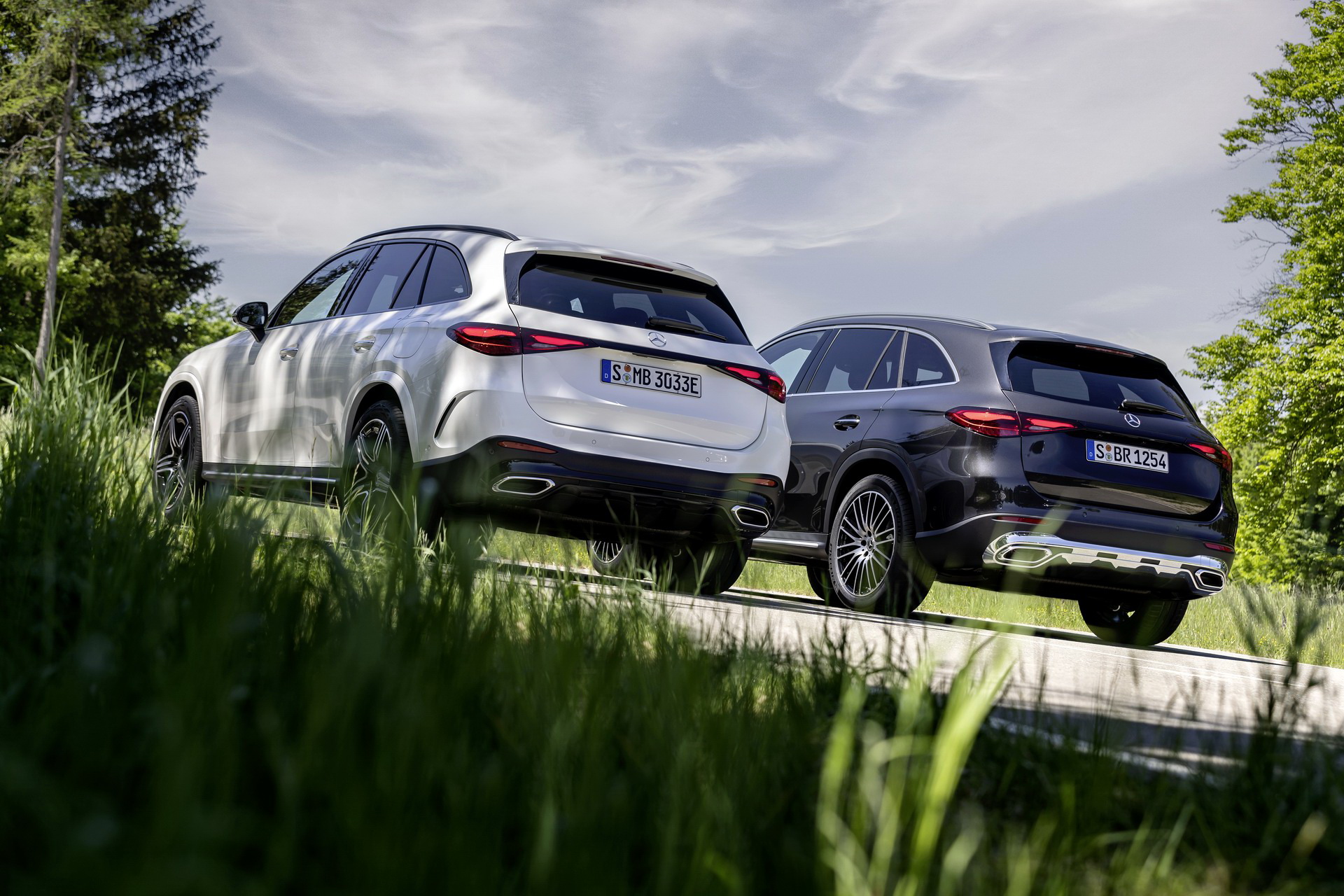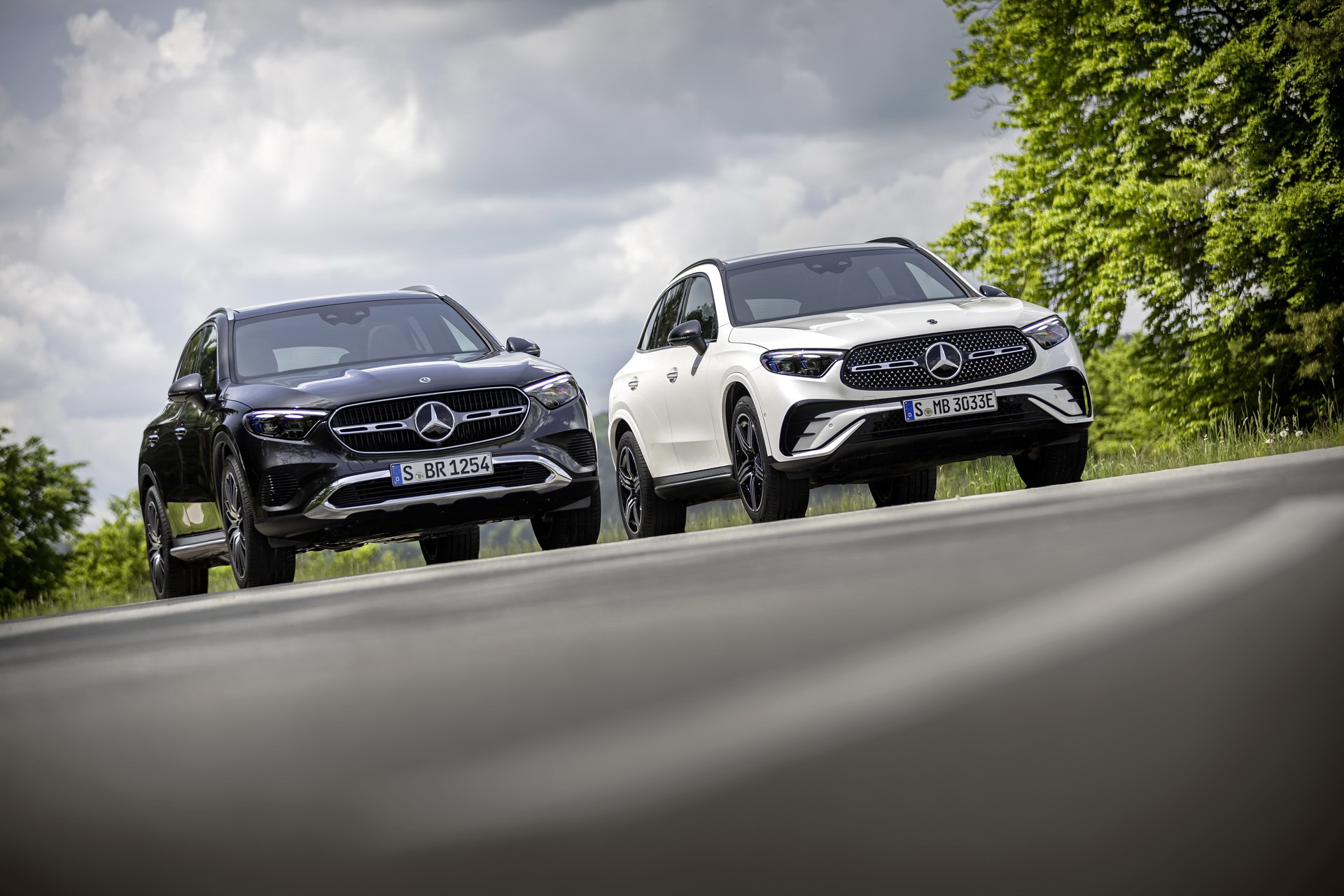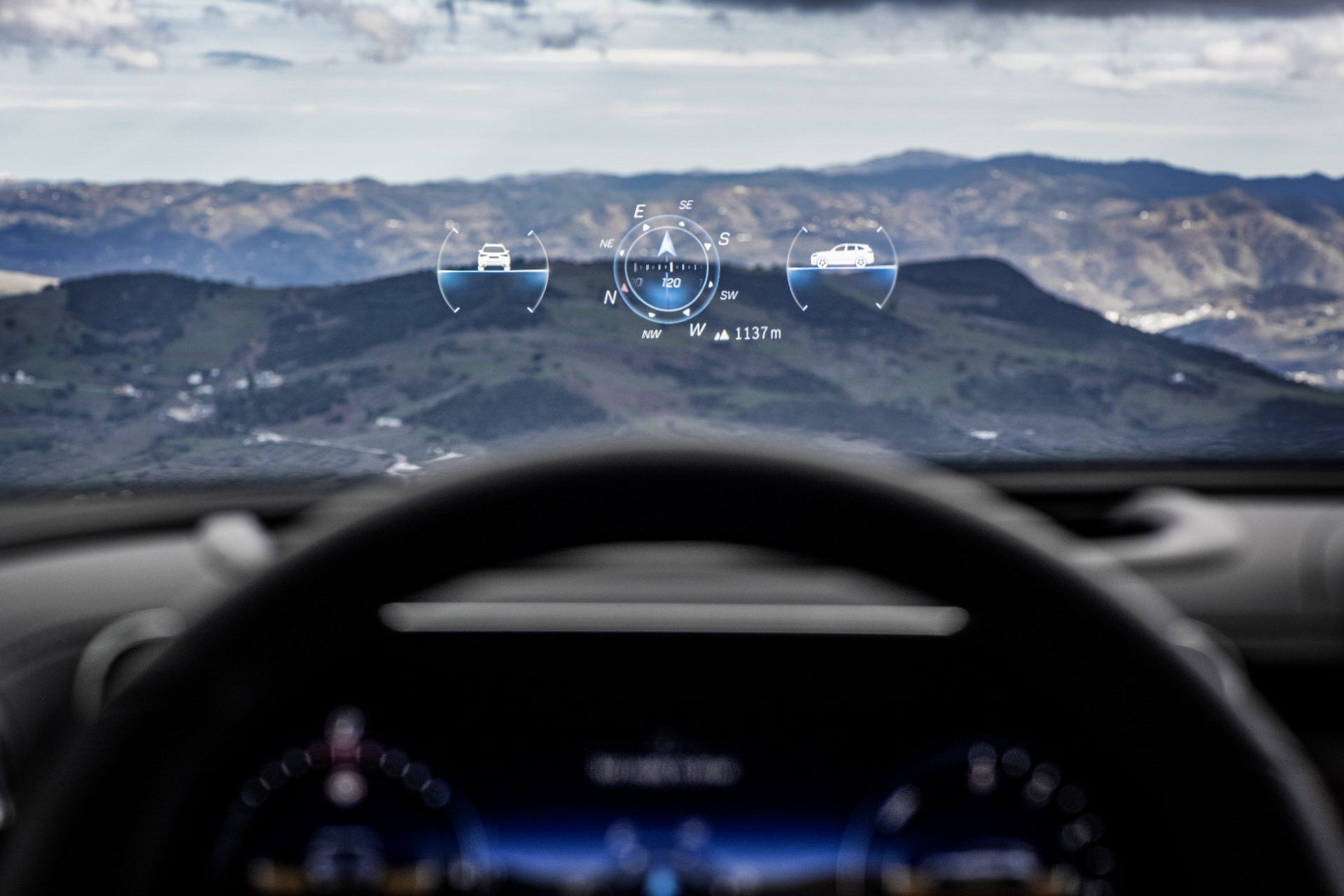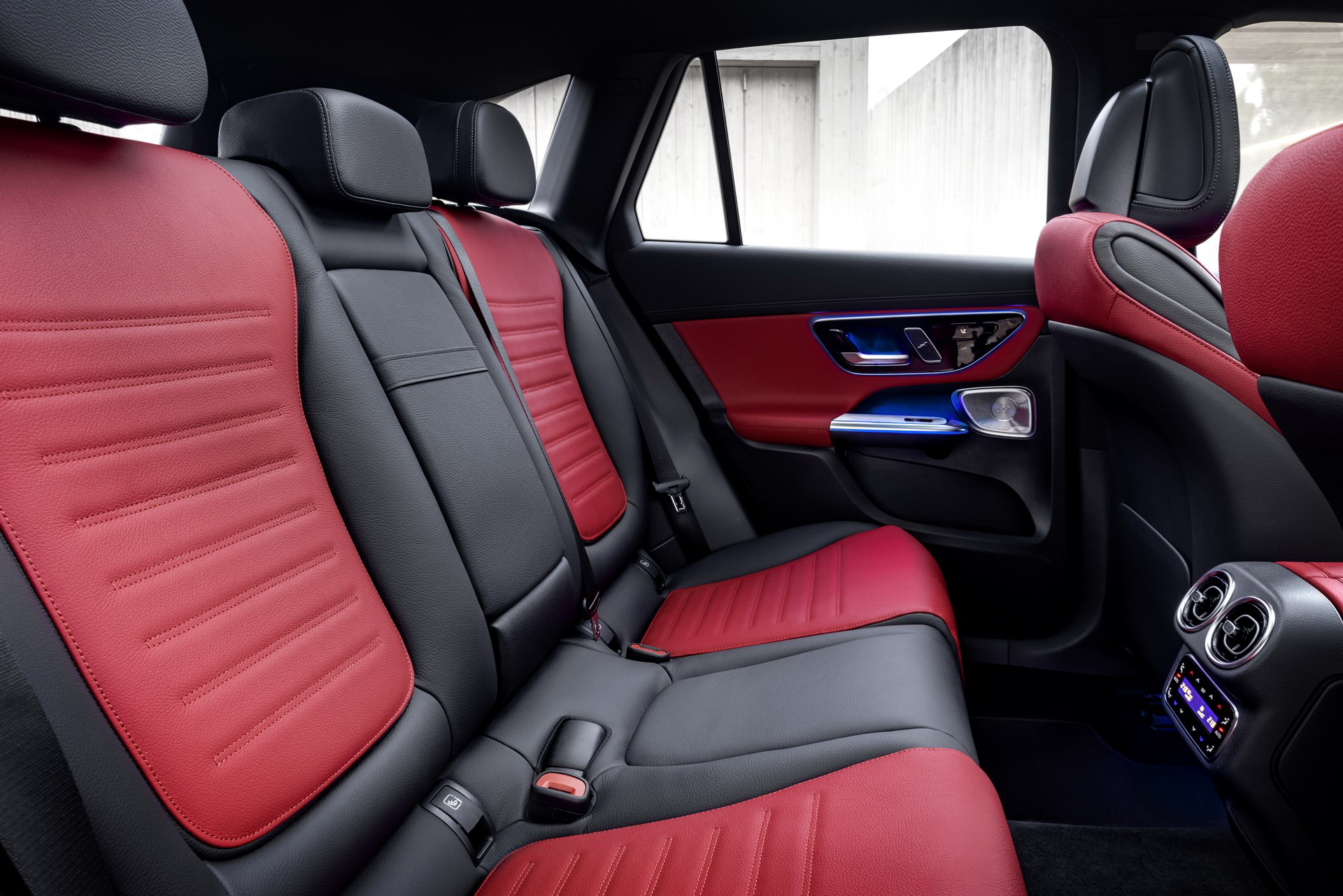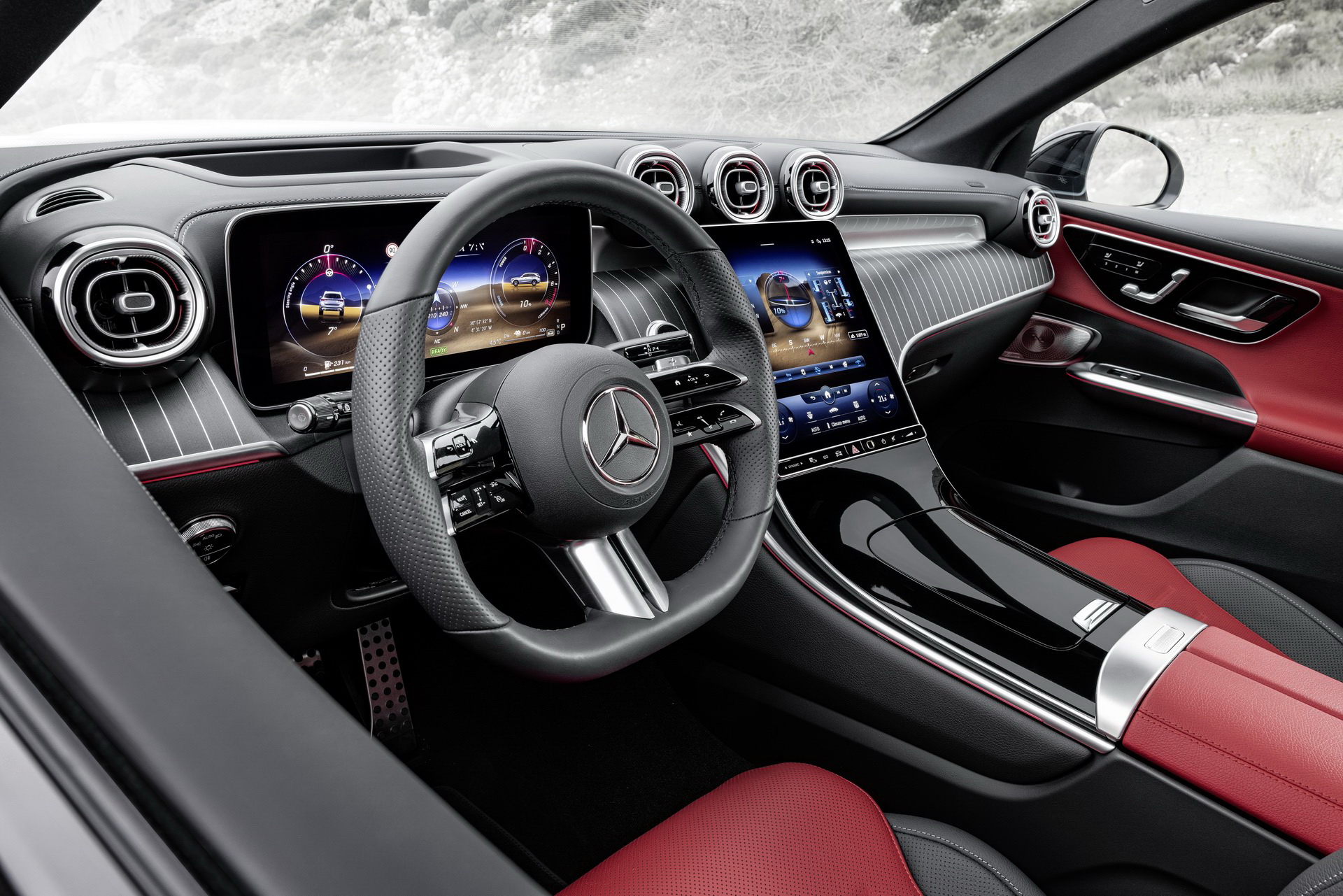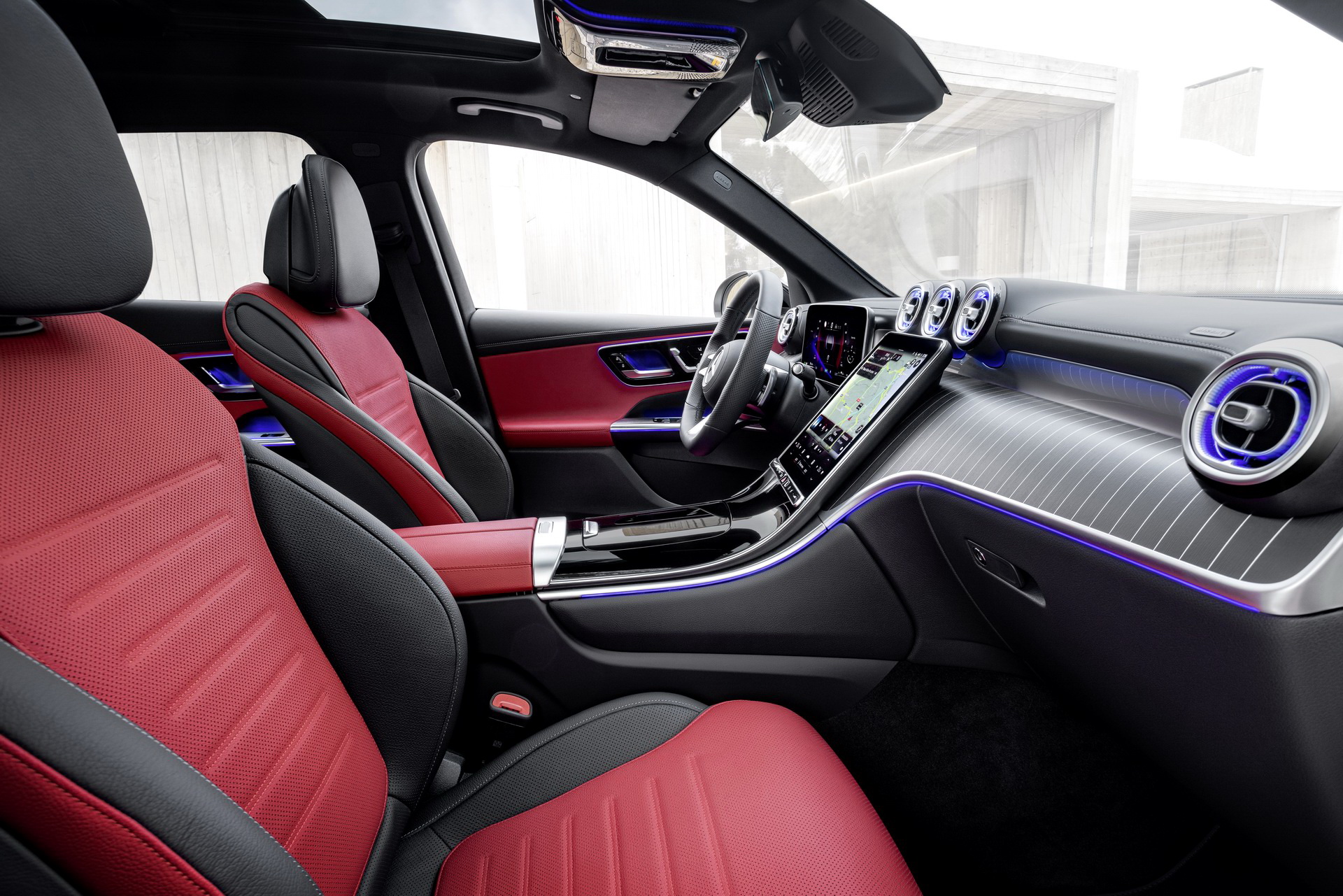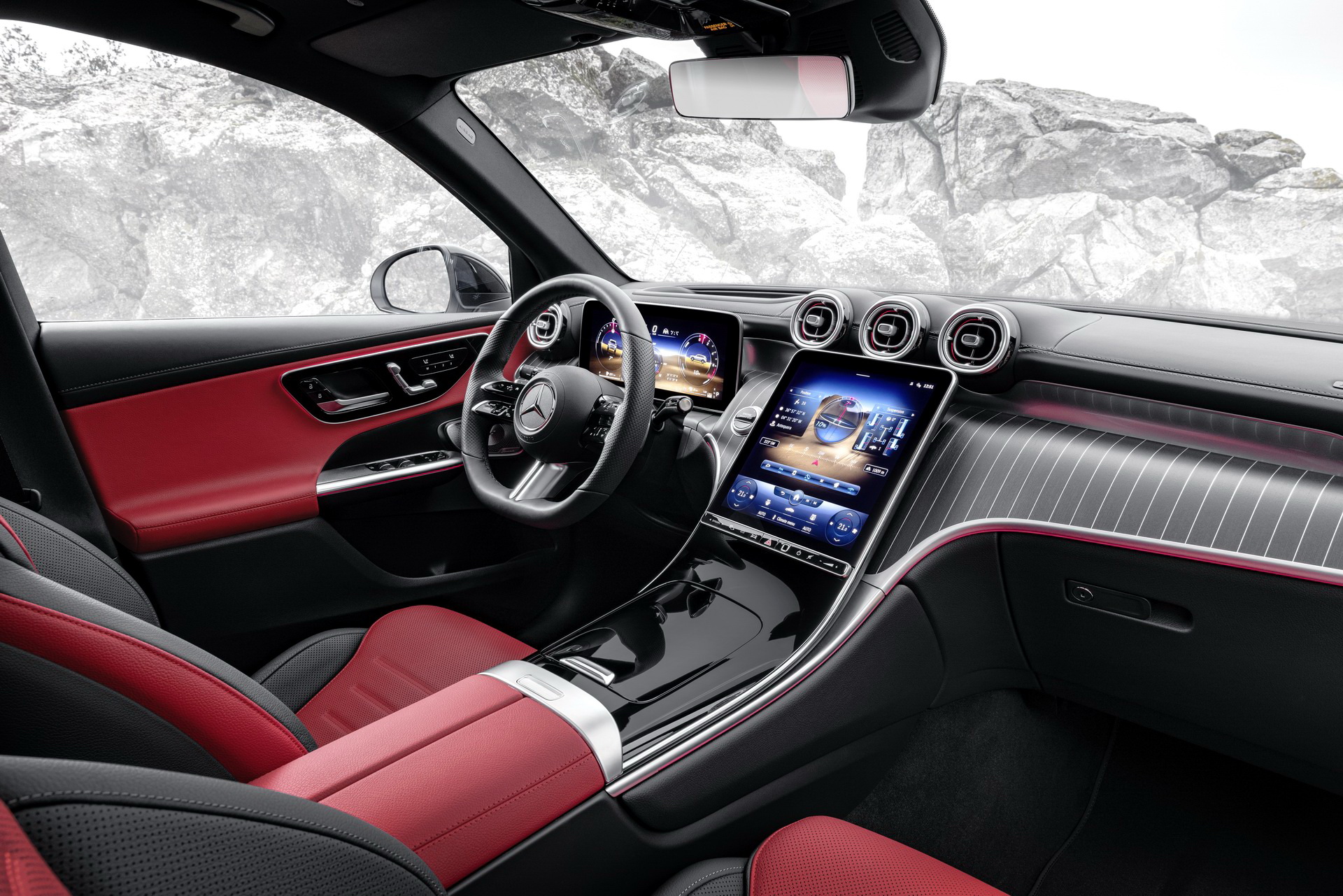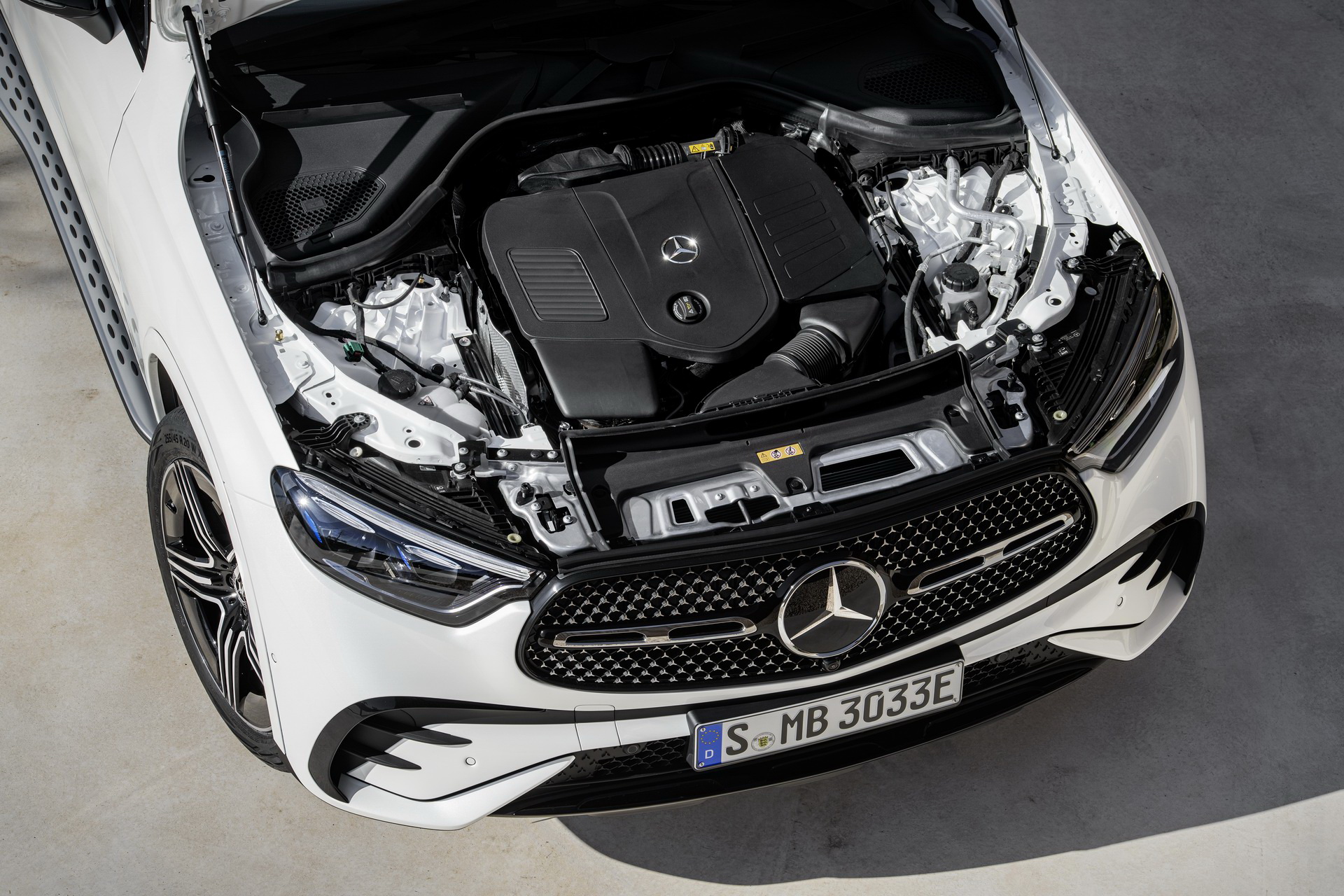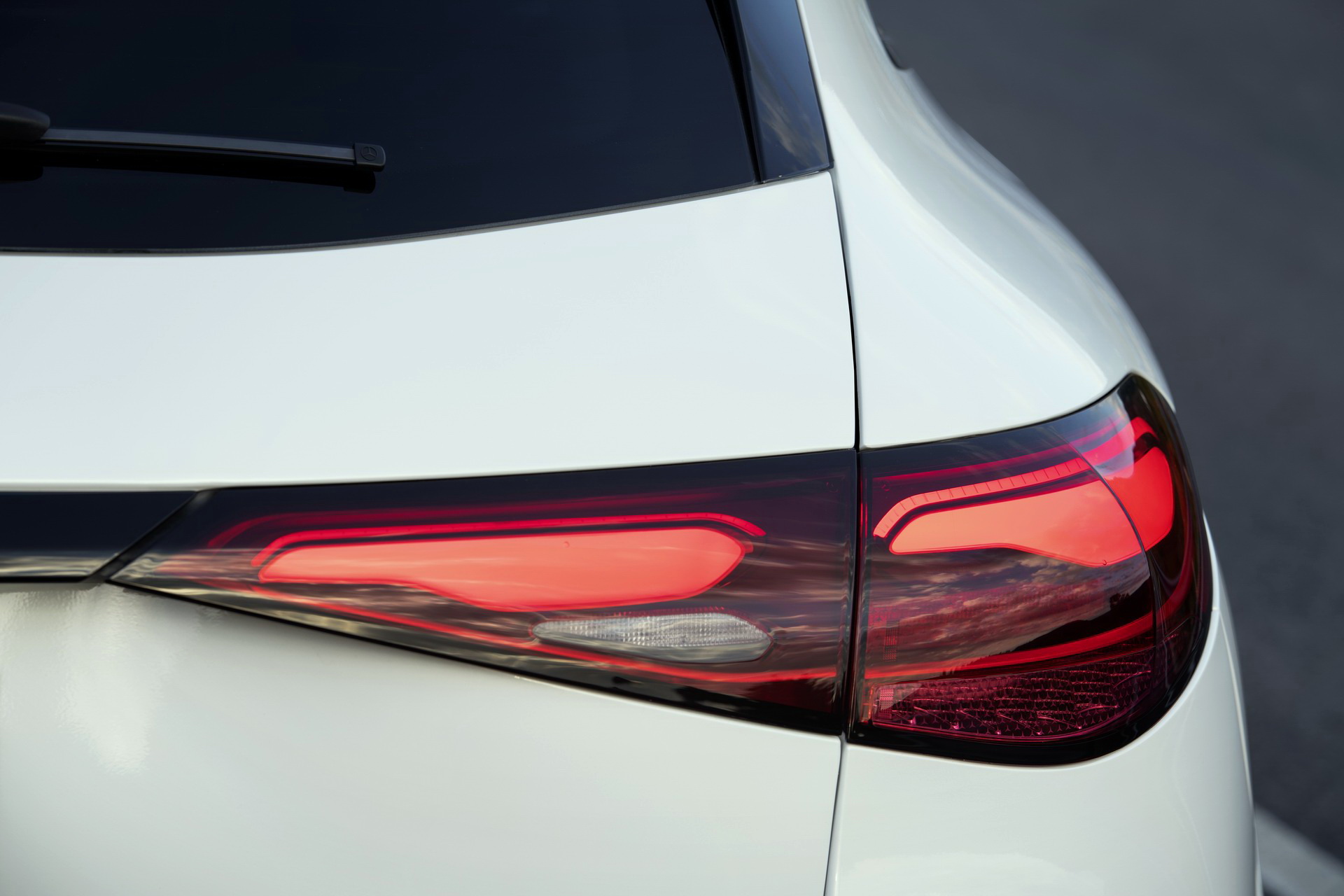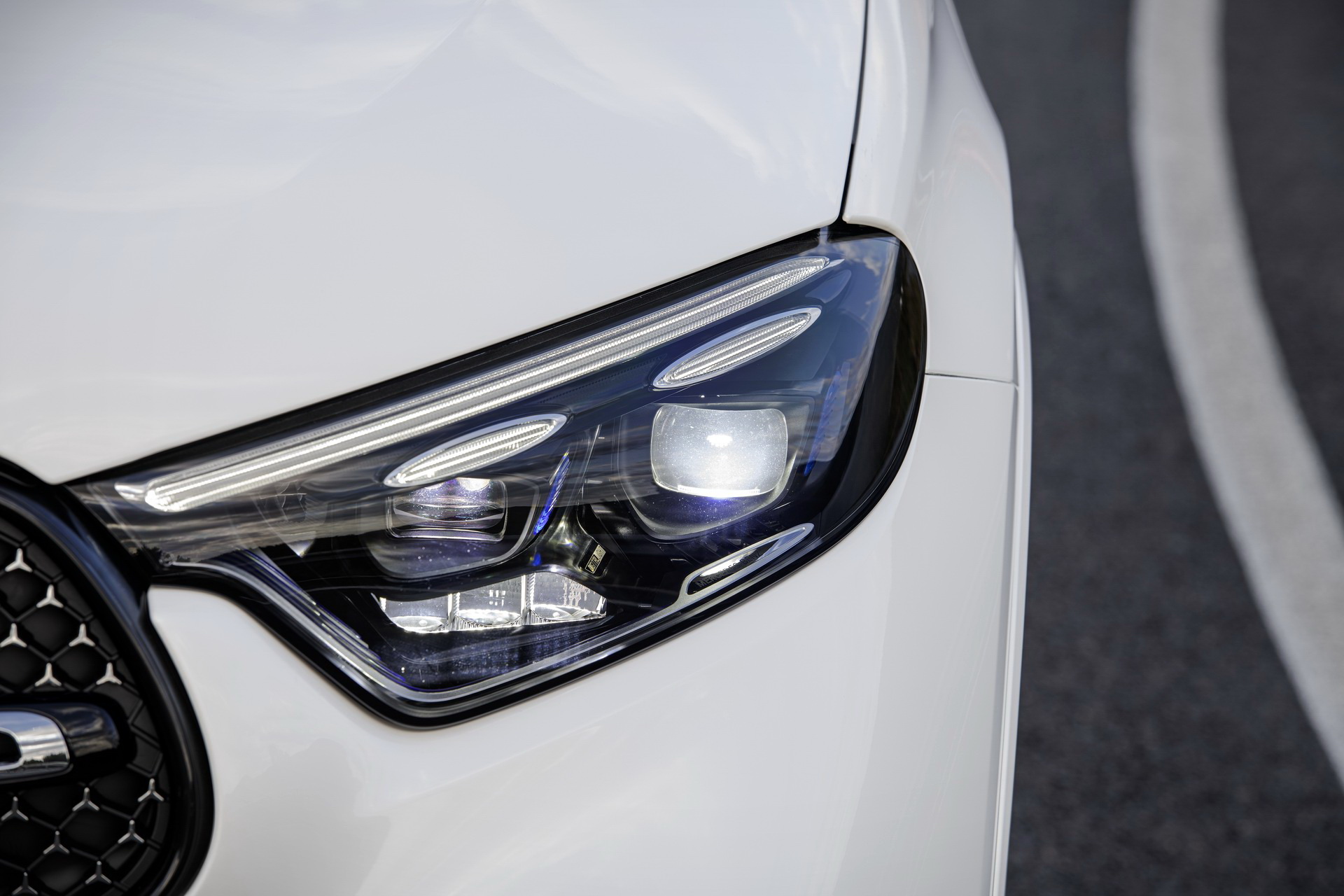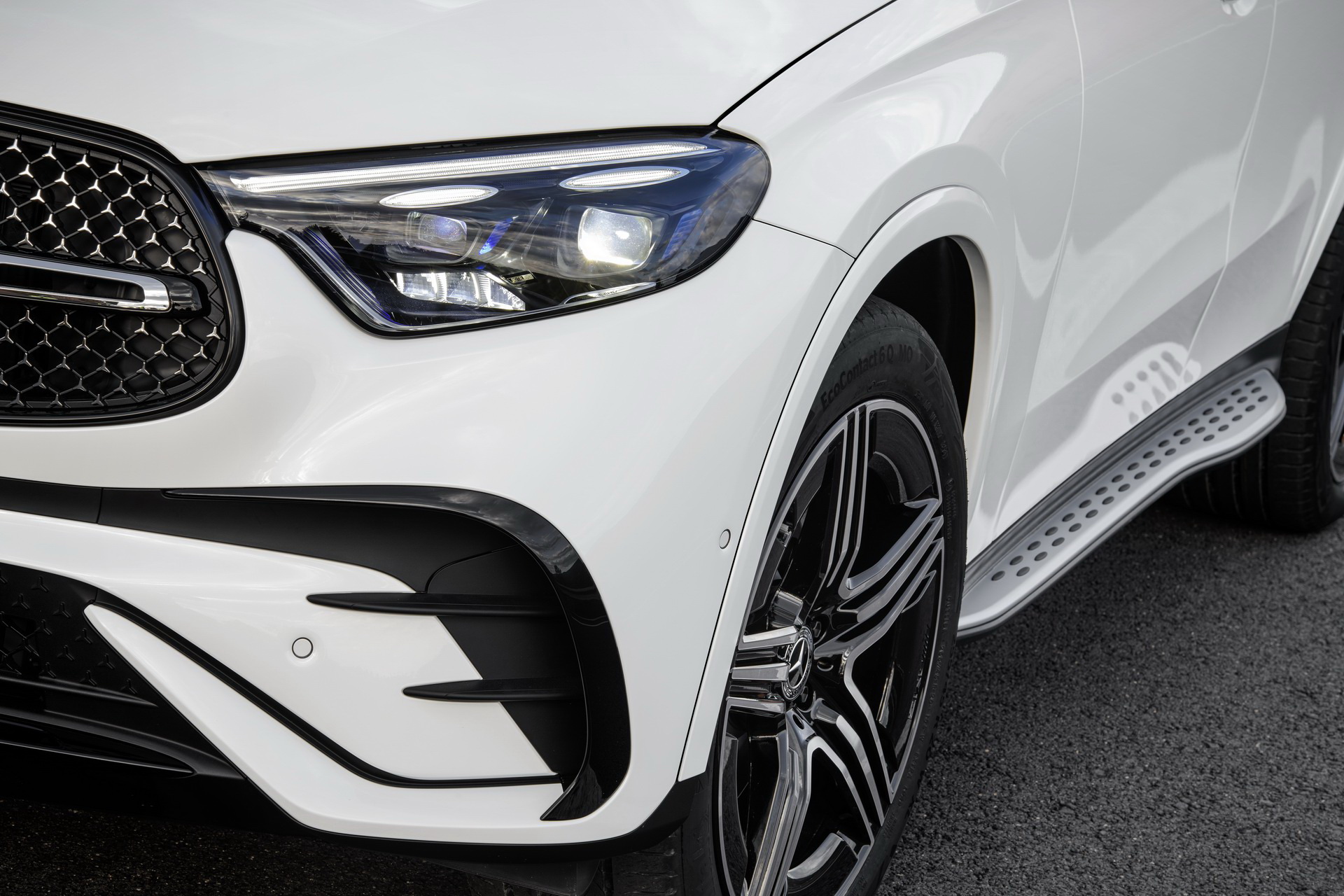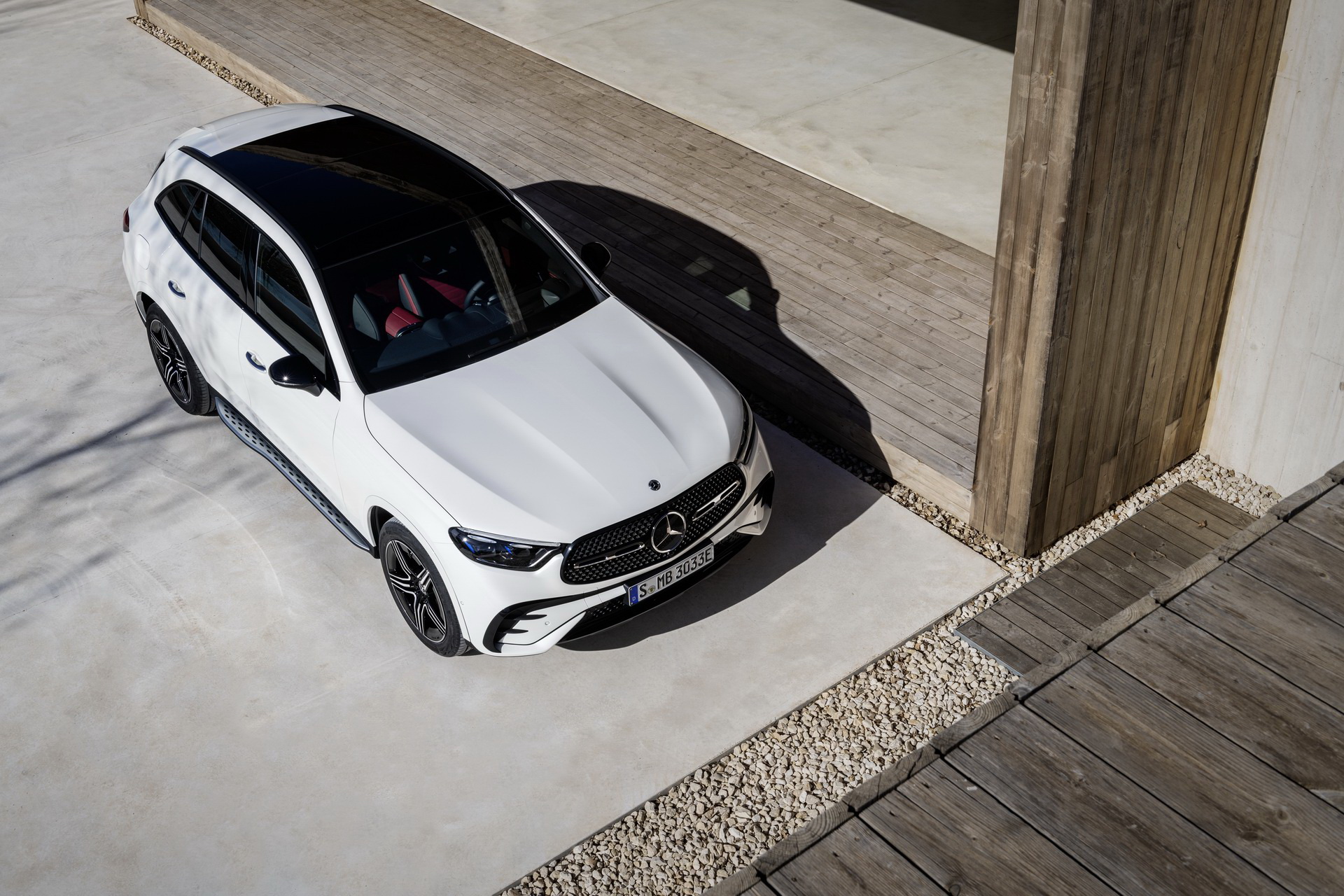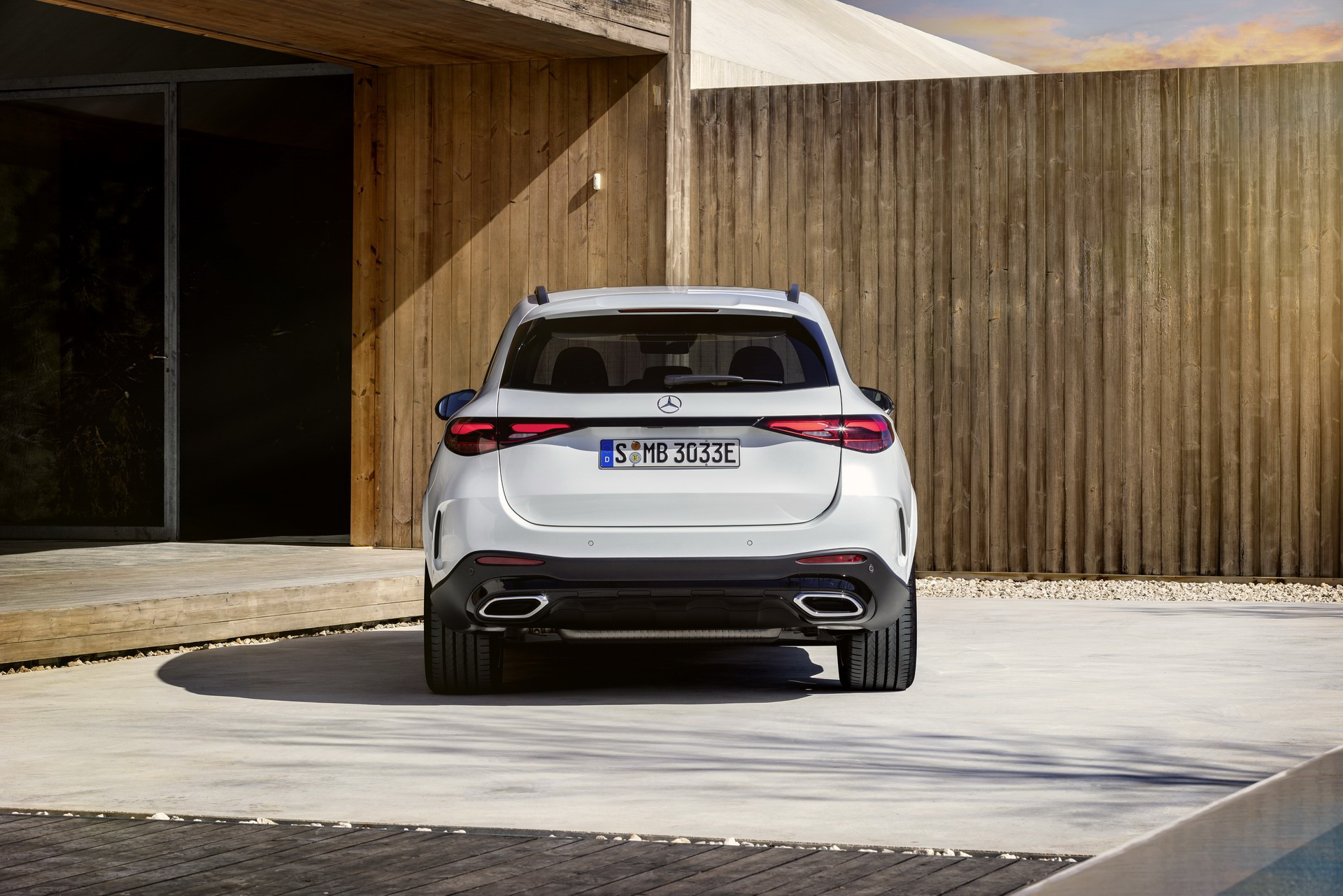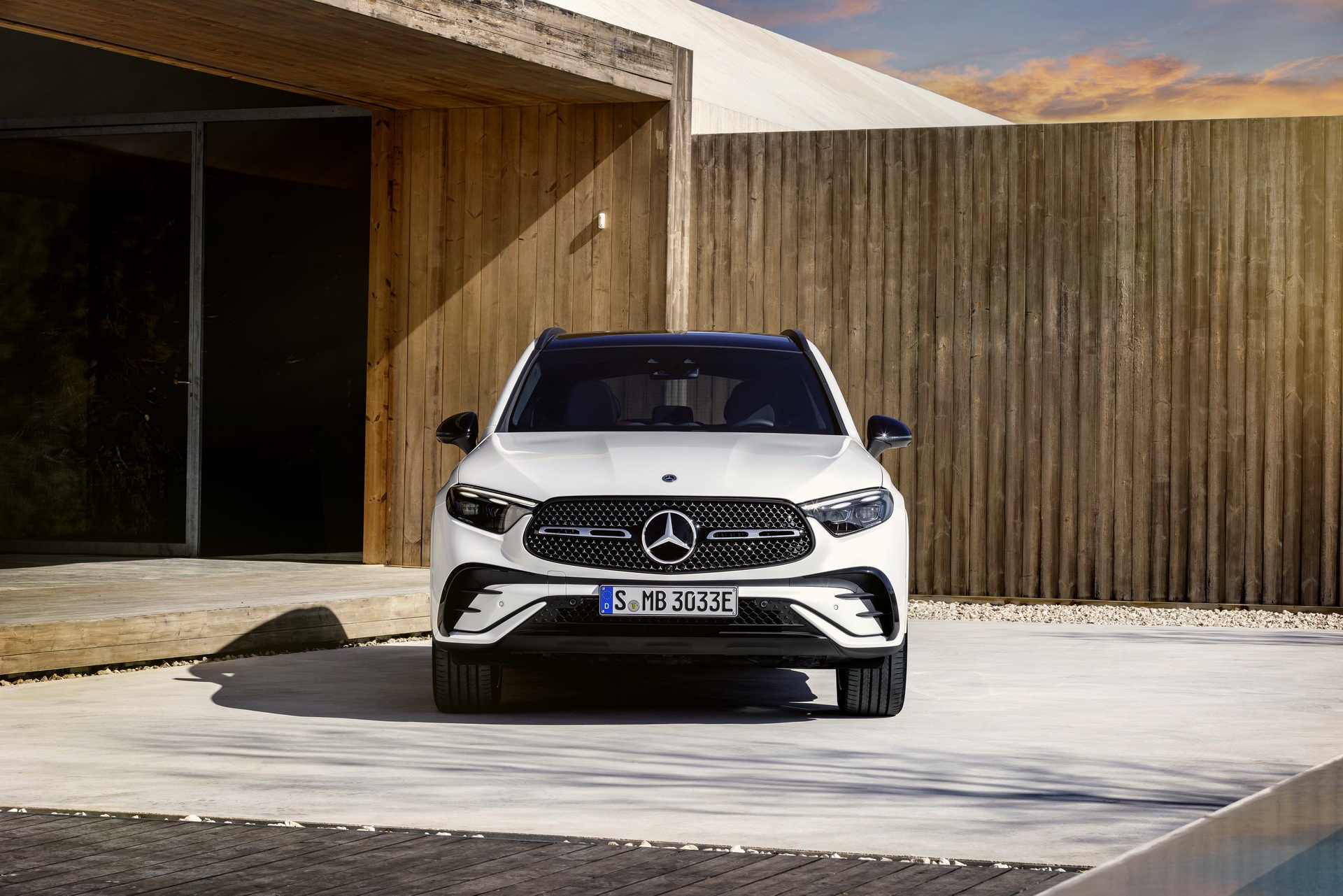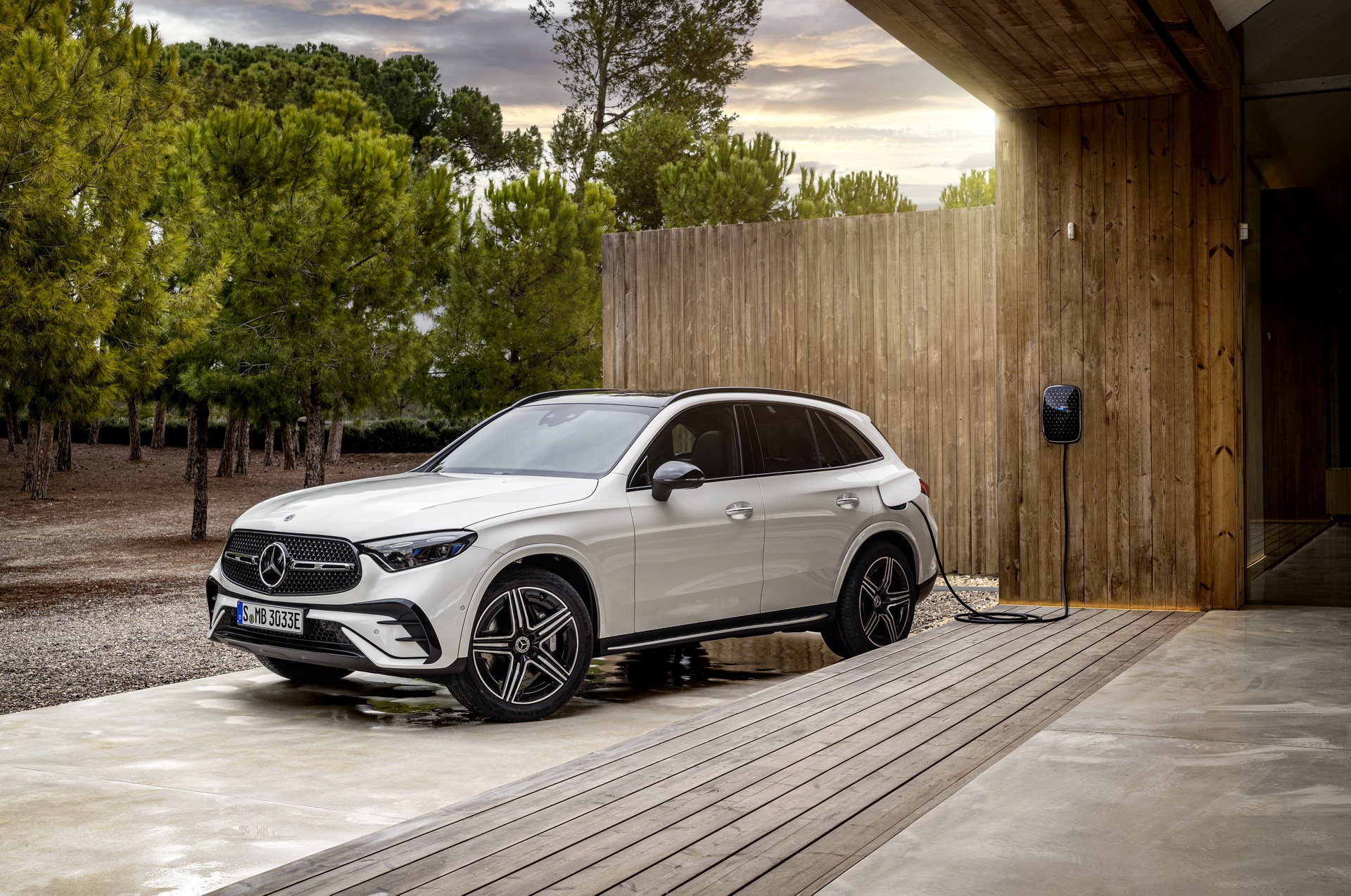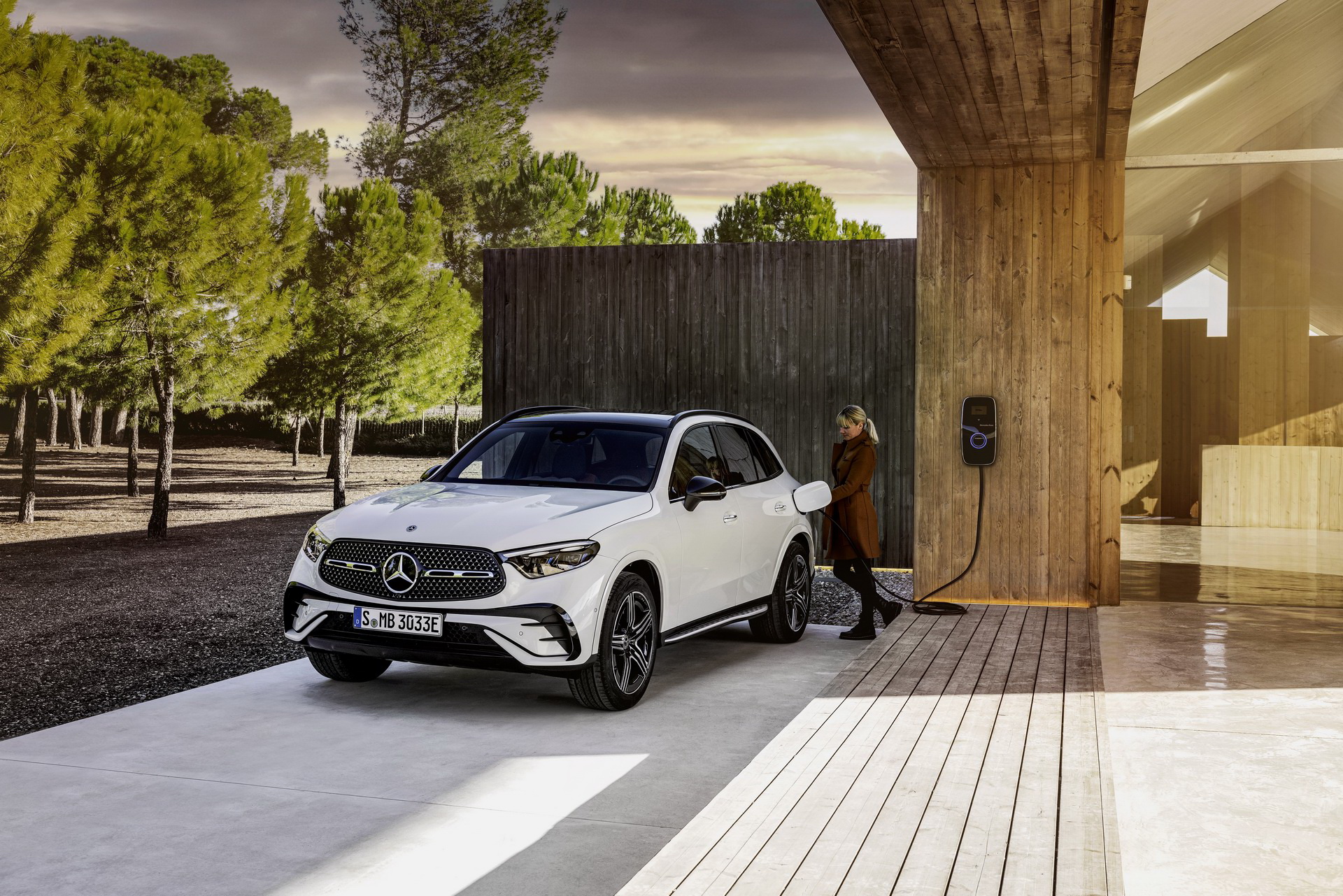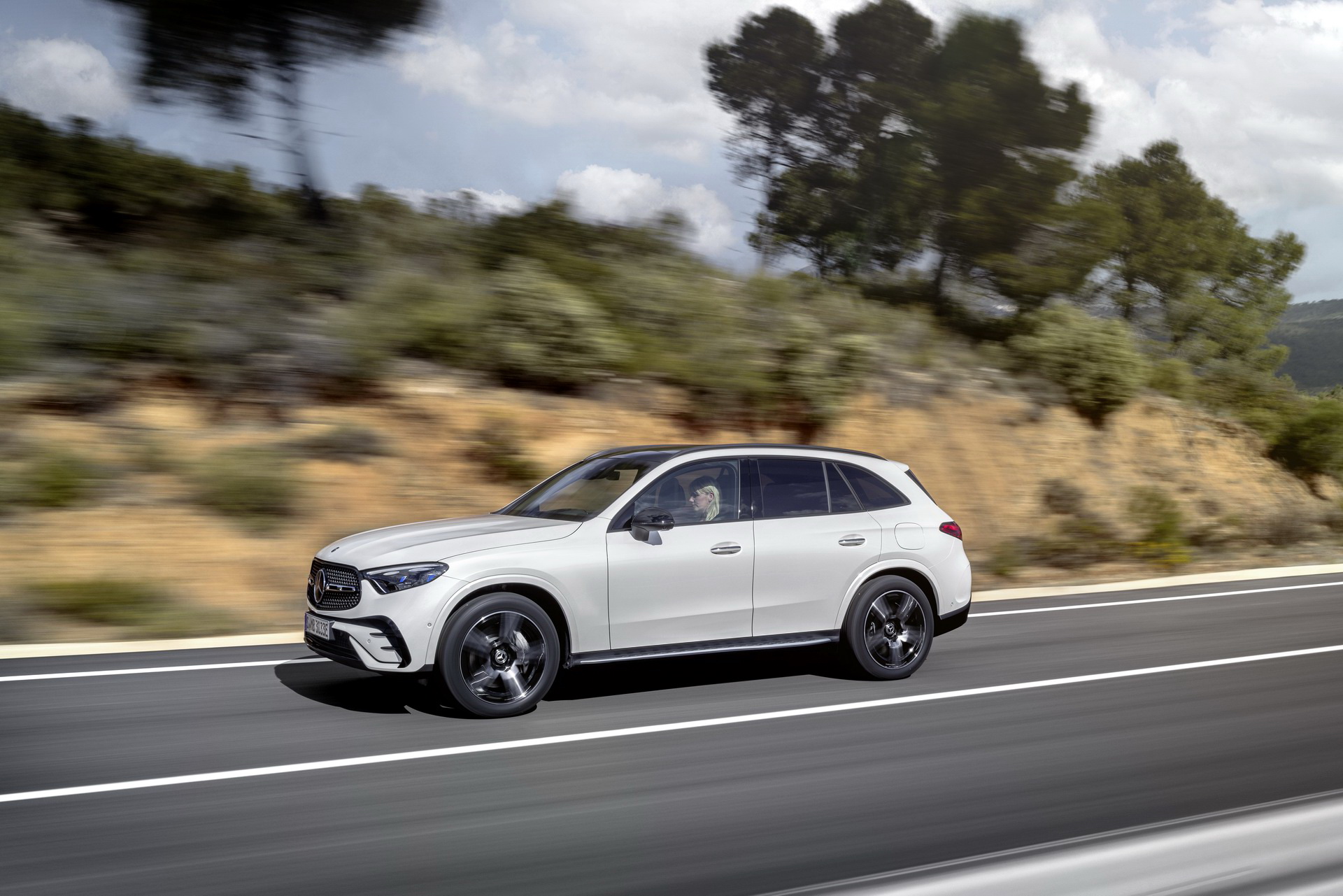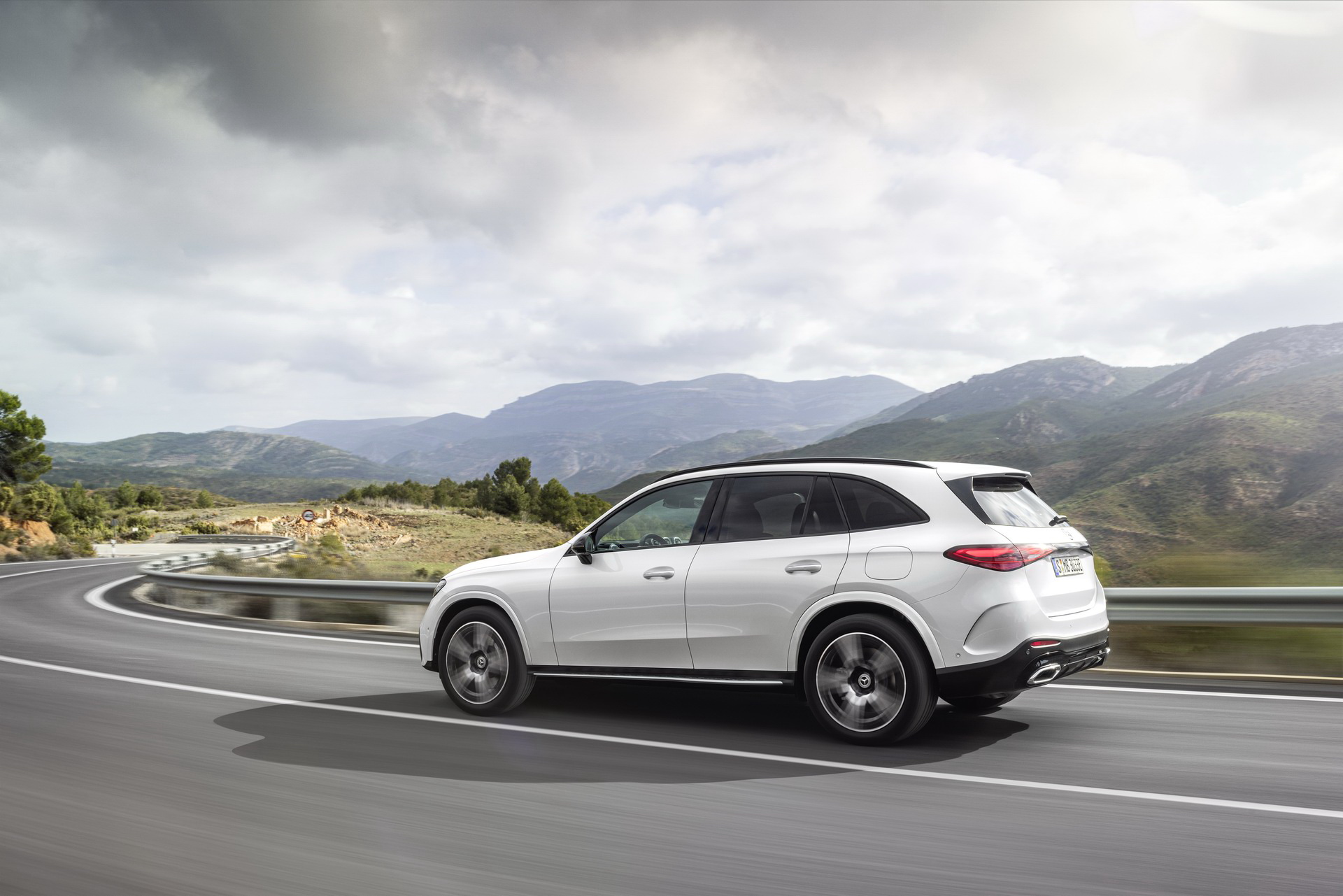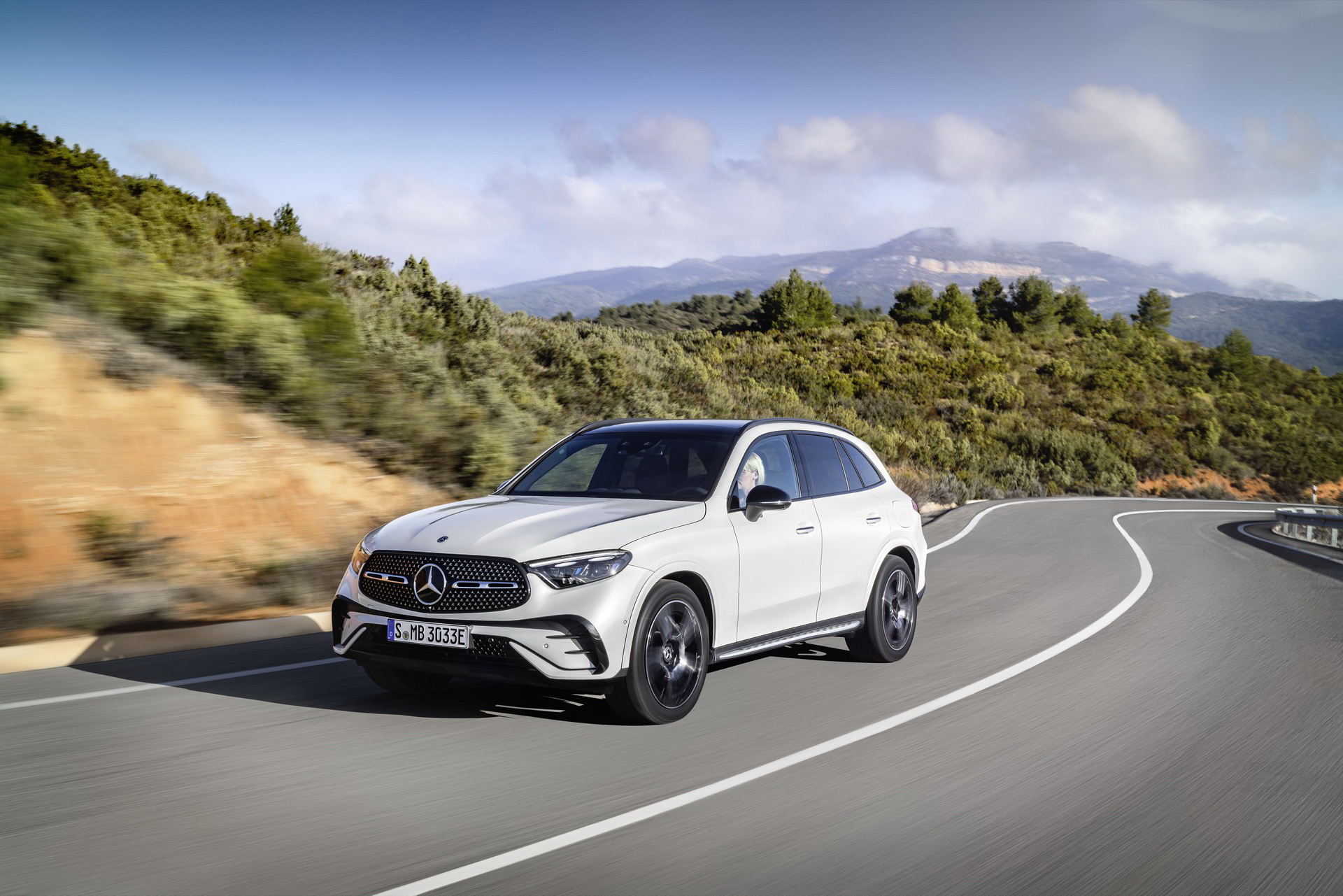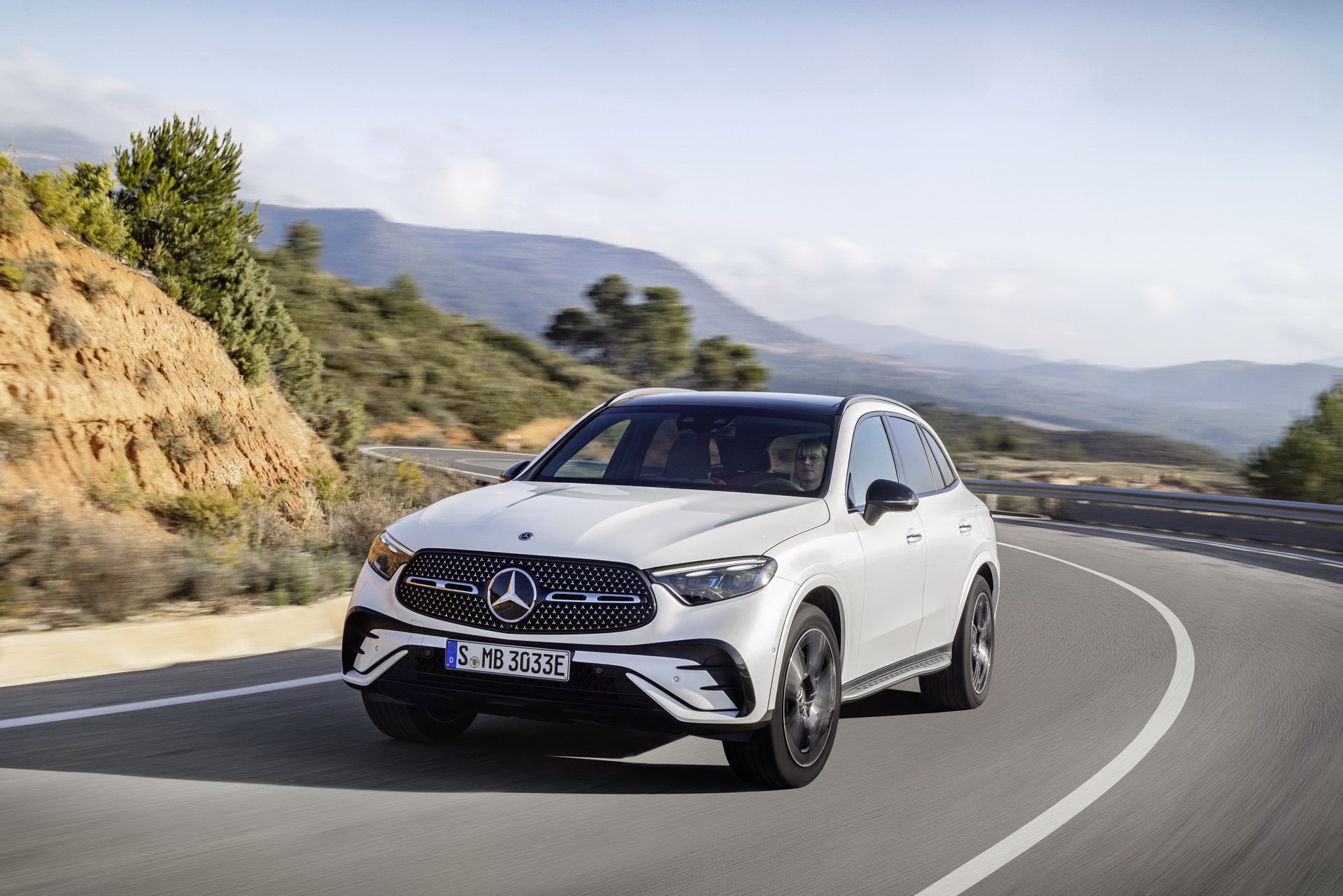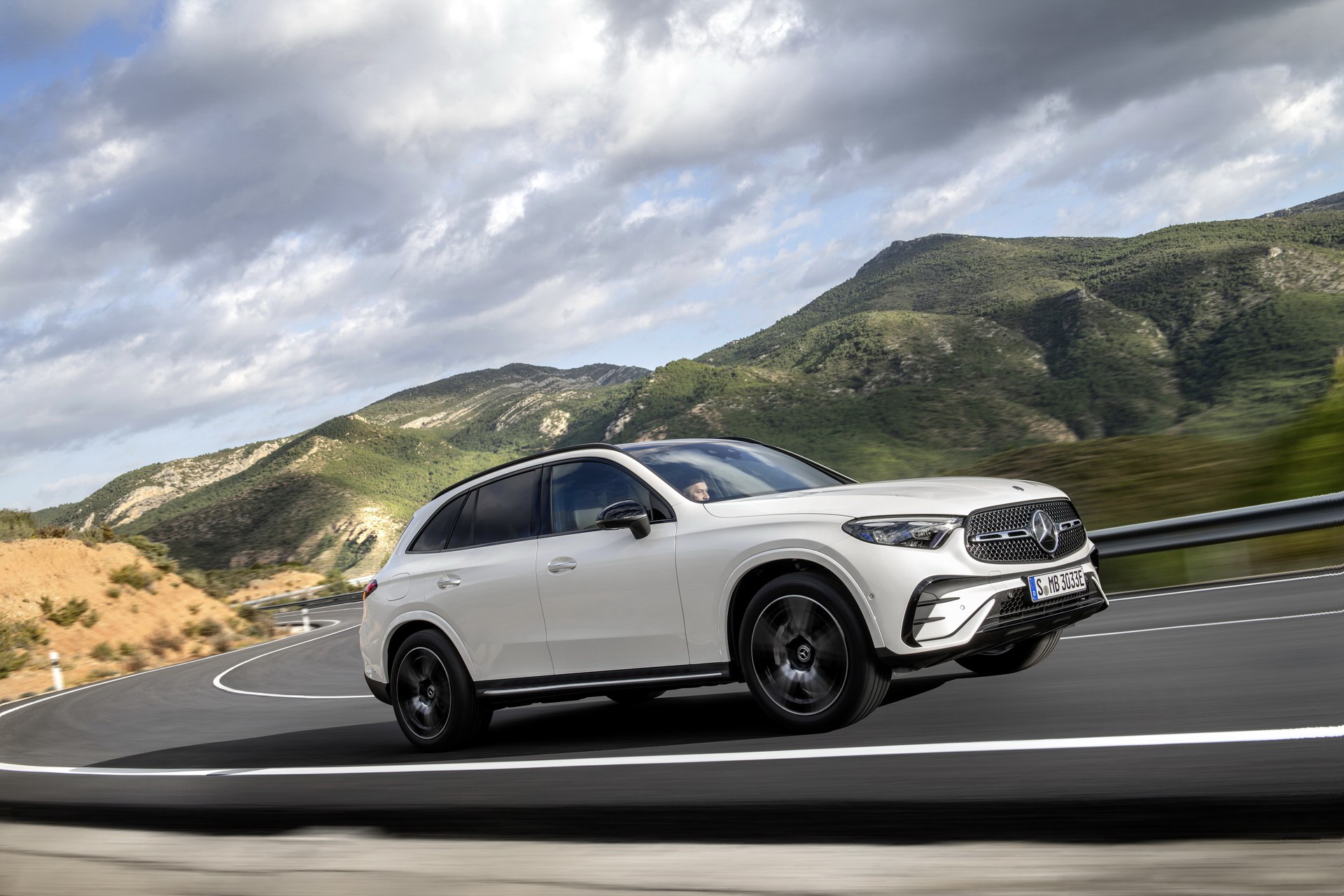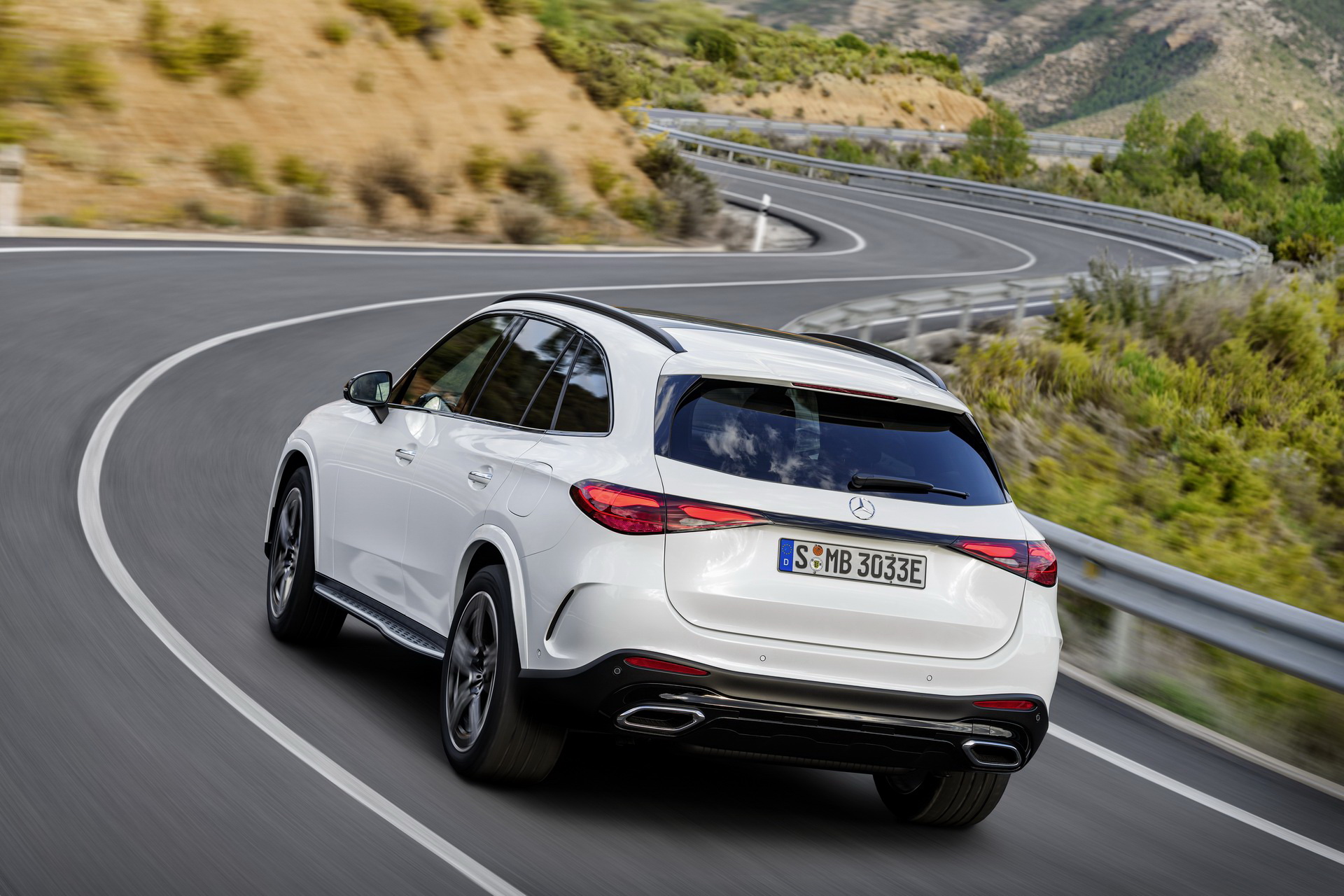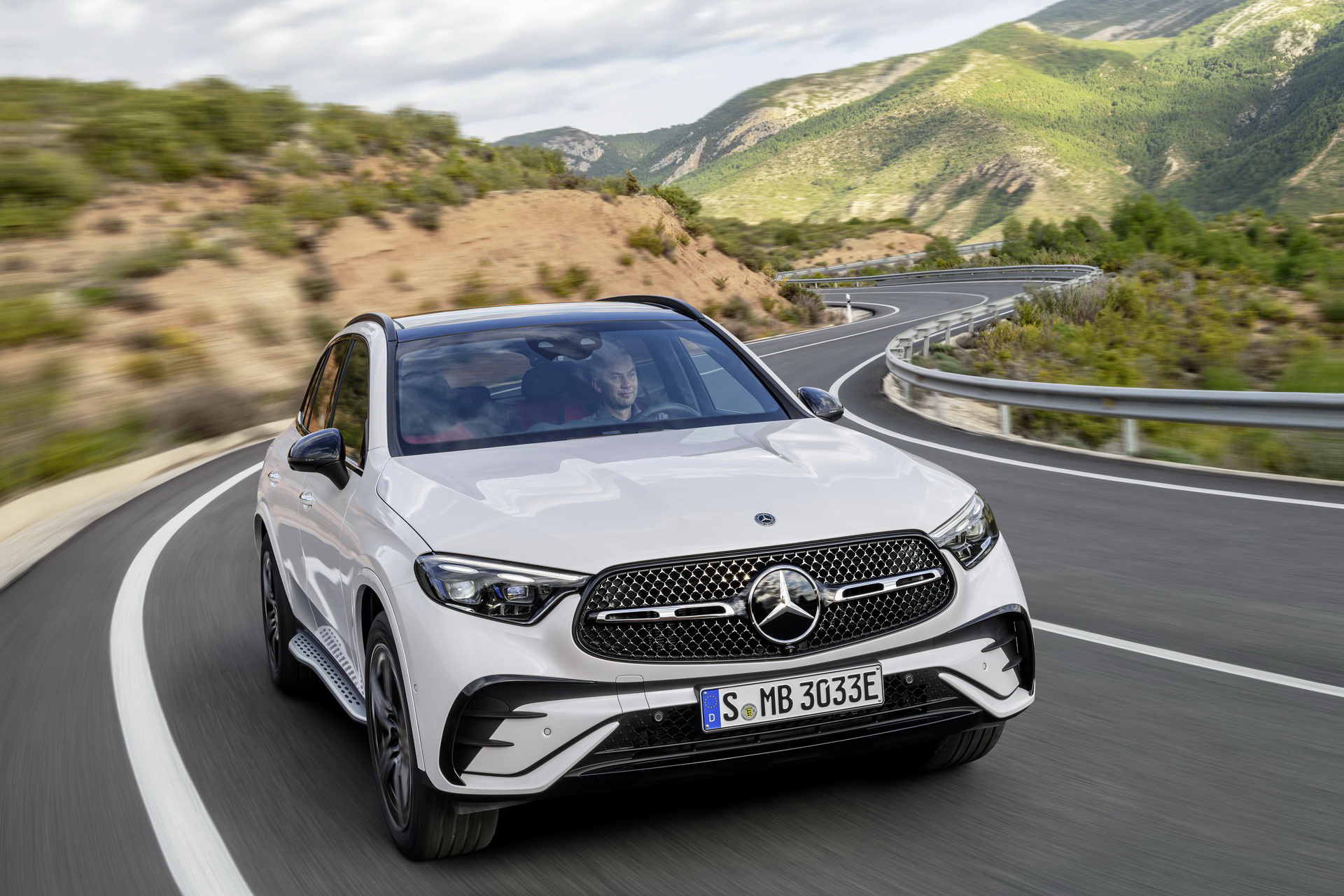Mercedes revealed the new 2023 GLC today and it has also announced which powertrains the compact luxury SUV will be offered with in Europe and Australia. All of the available drivetrains are, to one degree or another, enhanced with electric assistance.
Mercedes-Benz will offer a range of drivetrains in Europe half of which are mild hybrids that make use of the automaker’s second-generation integrated starter-generator (ISG). Three others will be plug-in hybrids.
All powertrain options are based on four-cylinder engines from the automaker’s Family of Modular Engines (FAME). The ISG is then capable of adding a 22 hp (17 kW/23 PS), 147 lb-ft (200 Nm) boost to the engine.
Read More: New 2023 Mercedes-Benz GLC Takes Two Steps Forward And No Steps Back
In the GLC 200 4Matic, the engine is rated at 201 hp (150 kW/204 PS) and 236 lb-ft (320 Nm) of torque, plus the boost. The GLC 220 d 4MATIC is rated at 194 hp (145 kW/197 PS) and 325 lb-ft (440 Nm) of torque, plus the additional torque boost. The GLC 300, meanwhile, is rated at 255 hp (190 kW/258 PS) and 290 lb-ft (400 Nm) of torque, plus the boost.
The plug-in hybrid powertrains also have four-cylinder engines that use Mercedes’ fourth-generation PHEV drive technology. The system is more compact and powerful than ever before and can move the GLC at speeds of up to 87 mph (140 km/h). A 31.2 kWh battery pack, meanwhile, means that the SUV can go up to 62 miles (100 km) on electric power alone. So far capable of delivering up to 134 hp (100 kW/136 PS) and 325 lb-ft (440 Nm) of torque in the GLC, the electric motor is a major benefit to the vehicle.
In the GLC 300 e 4MATIC, that means a system output of 308 hp (230 kW/313 PS) and 406 lb-ft (550 Nm) of torque. In the GLC 400 e 4MATIC it amounts to 375 hp (280 kW/381 PS) and 479 lb-ft (650 Nm) of torque; and, finally, the GLC 300 de 4MATIC is good for 328 hp (245/335 PS) and a whopping 553 lb-ft (750 Nm) of torque.
Outlandish Fuel Economy Numbers, But It’s The Battery, Stupid!
According to the European WLTP test cycle, the SUVs, in particular the plug-in hybrids, are very fuel efficient. The GLC 200 and 300 return 8.2 l/100 km in the city and 7.3 on the highway (29/32 mpg) while the GLC 220 d is a little better at 5.9 city/5.2 highway (40/45 mpg) on the WLTP driving cycle.
The plug-in hybrid GLC 300 e and 400 e, meanwhile are good for an outlandish 0.8 lt/100 km in the city and 0.6 l/100km on the highway (294/392 mpg respectively), and the diesel GLC 300 de maxes out at 0.7 l/100km in the and 0.5 l/100km on the highway (equal to 336/470 mpg). That’s not a mistake, it’s what Mercedes claims. However, there’s a perfectly reasonable explanation that doesn’t really have anything to do with the diesel engine itself as it does with the large battery that allows the SUV to travel without sipping any fossil-fuel during WLTP testing.
Even higher-power versions of the SUV from AMG are expected to follow for all markets before the end of the year, likely based around the mechanically related C43 and upcoming C63 AMG sedans.








